Düsseldorf 1980 -1989
After graduating, an intensive period of work begins with numerous exhibitions in Germany and abroad. Klaus Jung becomes part of the Hildebrandstraße studio community in Düsseldorf-Bilk. Six artists rent a backyard building together, which also houses living and working spaces. The shared kitchen is located one floor below – the centre for discussions, invitations, parties and skat sessions. The internal discussions soon spill over into the outside world: the first open studio weekends attract an interested audience – the house is full.
Bridges (1983)
A flexible construction material is created with corrugated cardboard: light, precise, glueable. Miniature bridges are created from it – model-like fantasies, fed by inner images and "prejudice models". The scale deliberately plays with ideas of reality, representation and illusion. The bridge series is the starting point for numerous subsequent works.
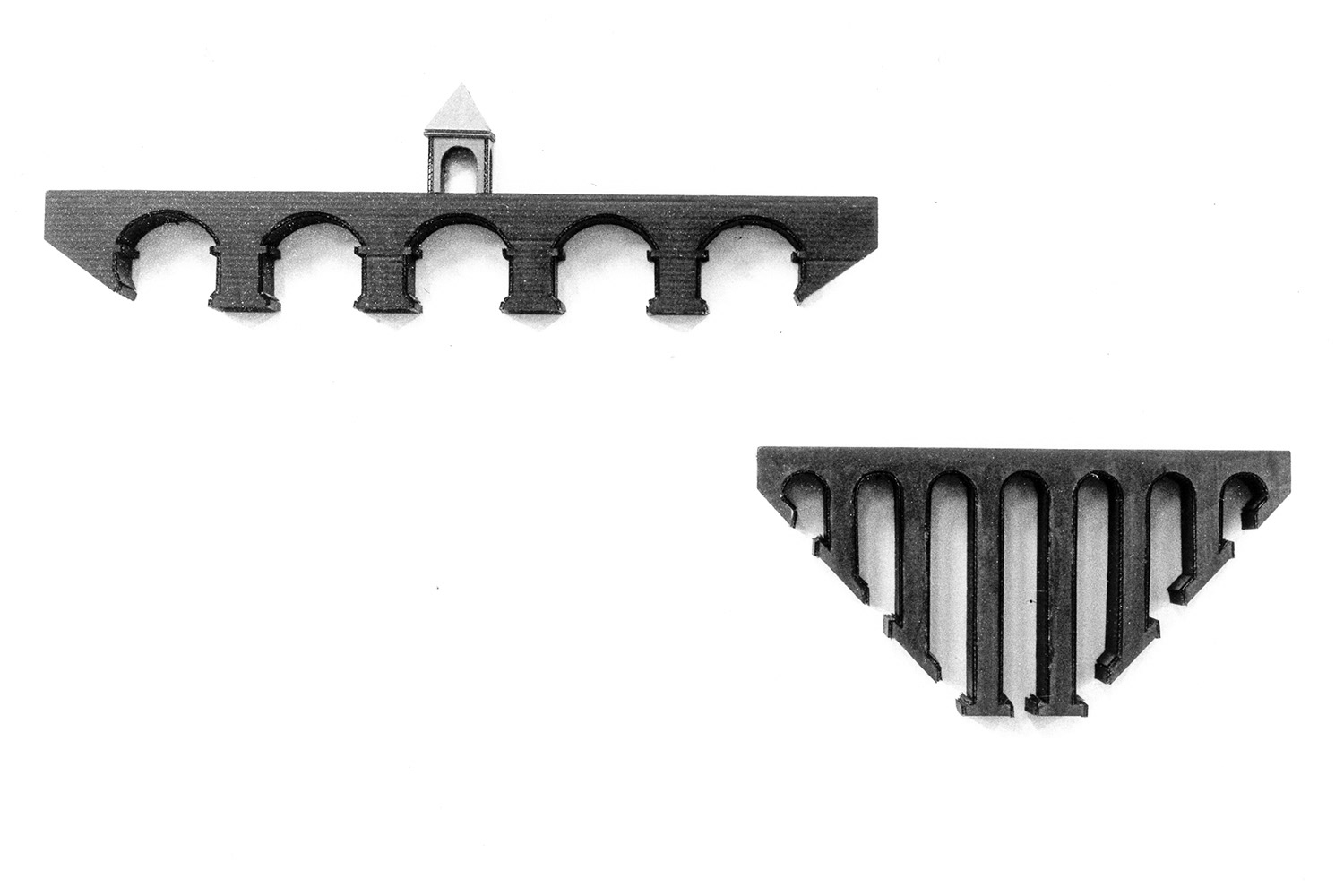
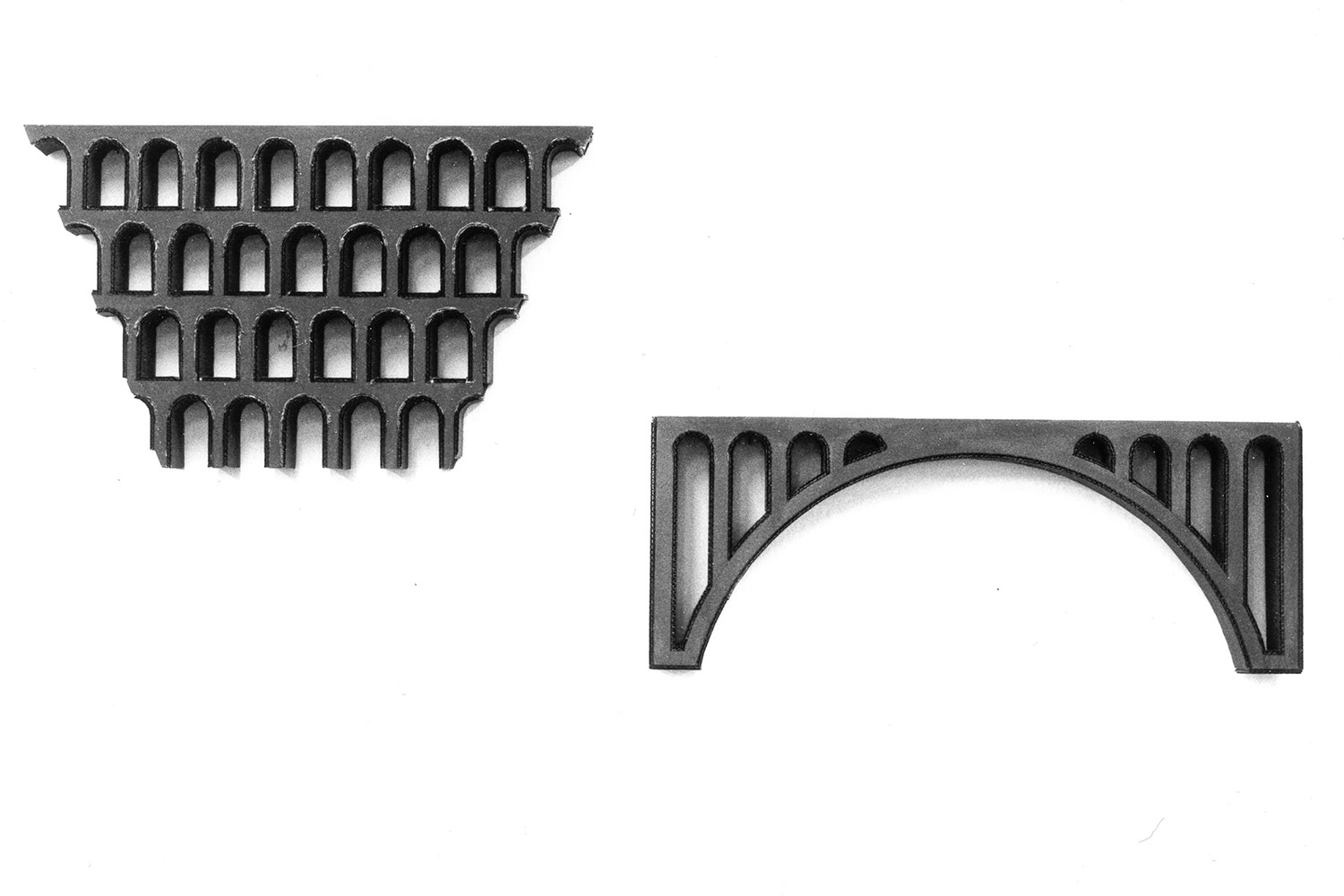
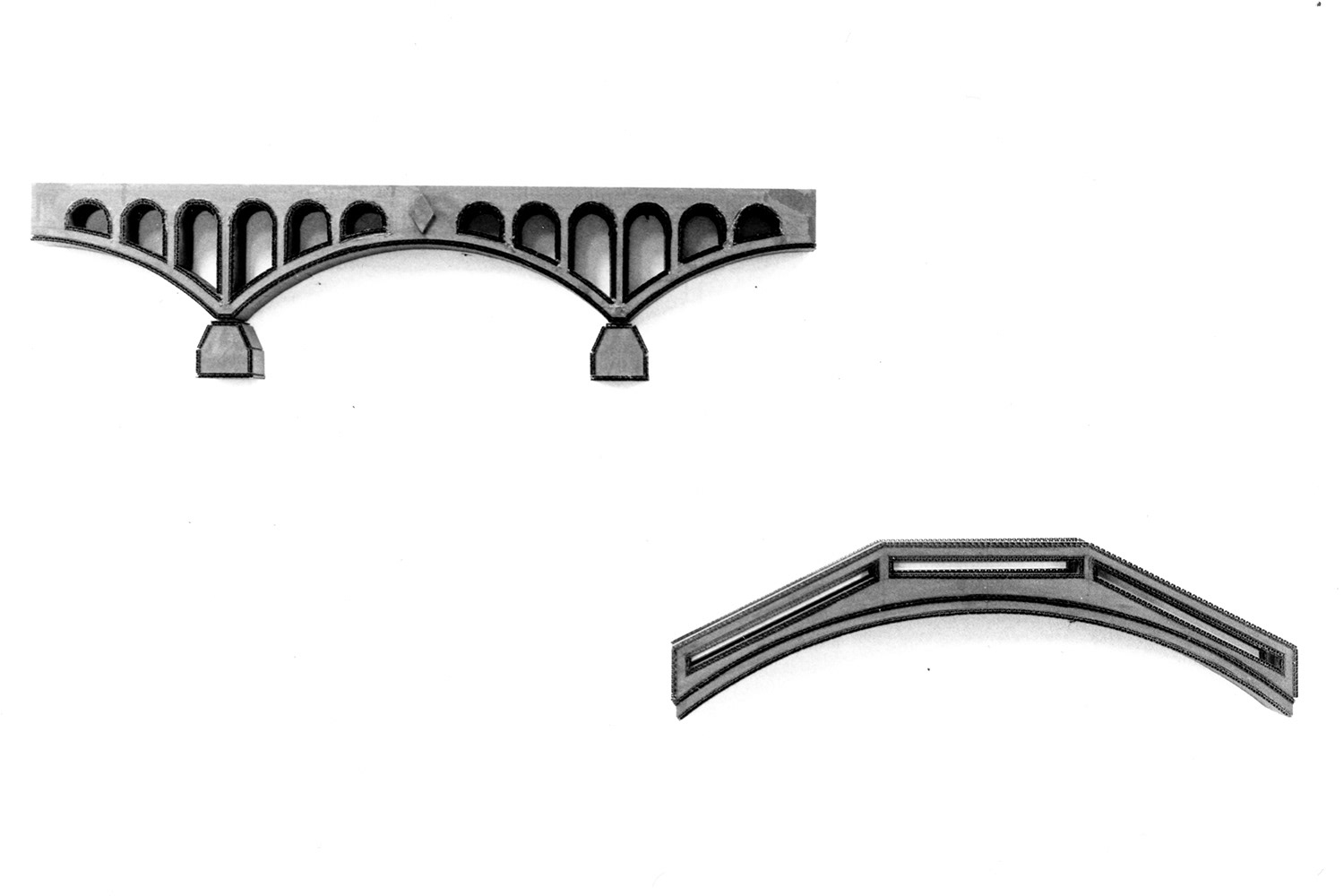
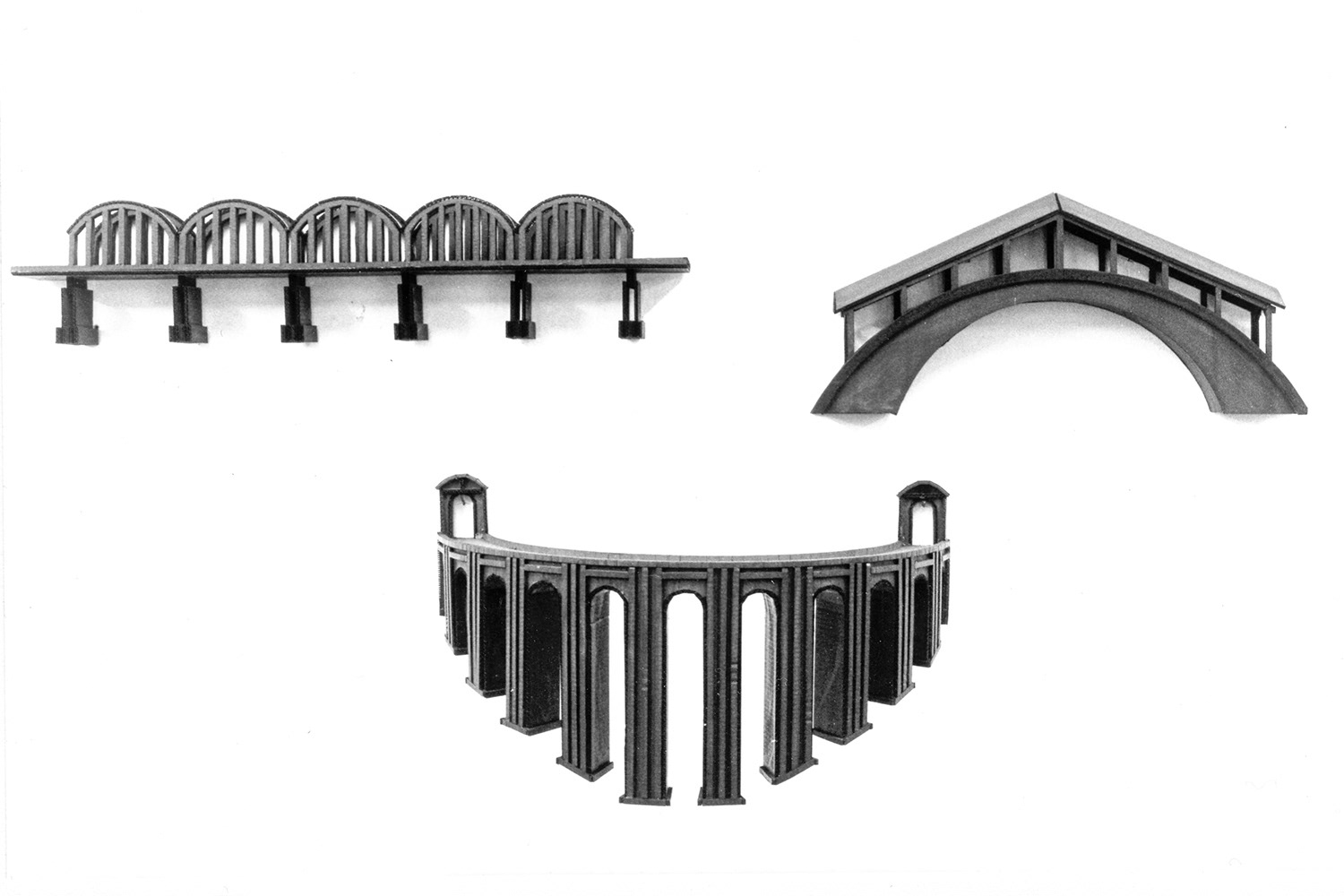
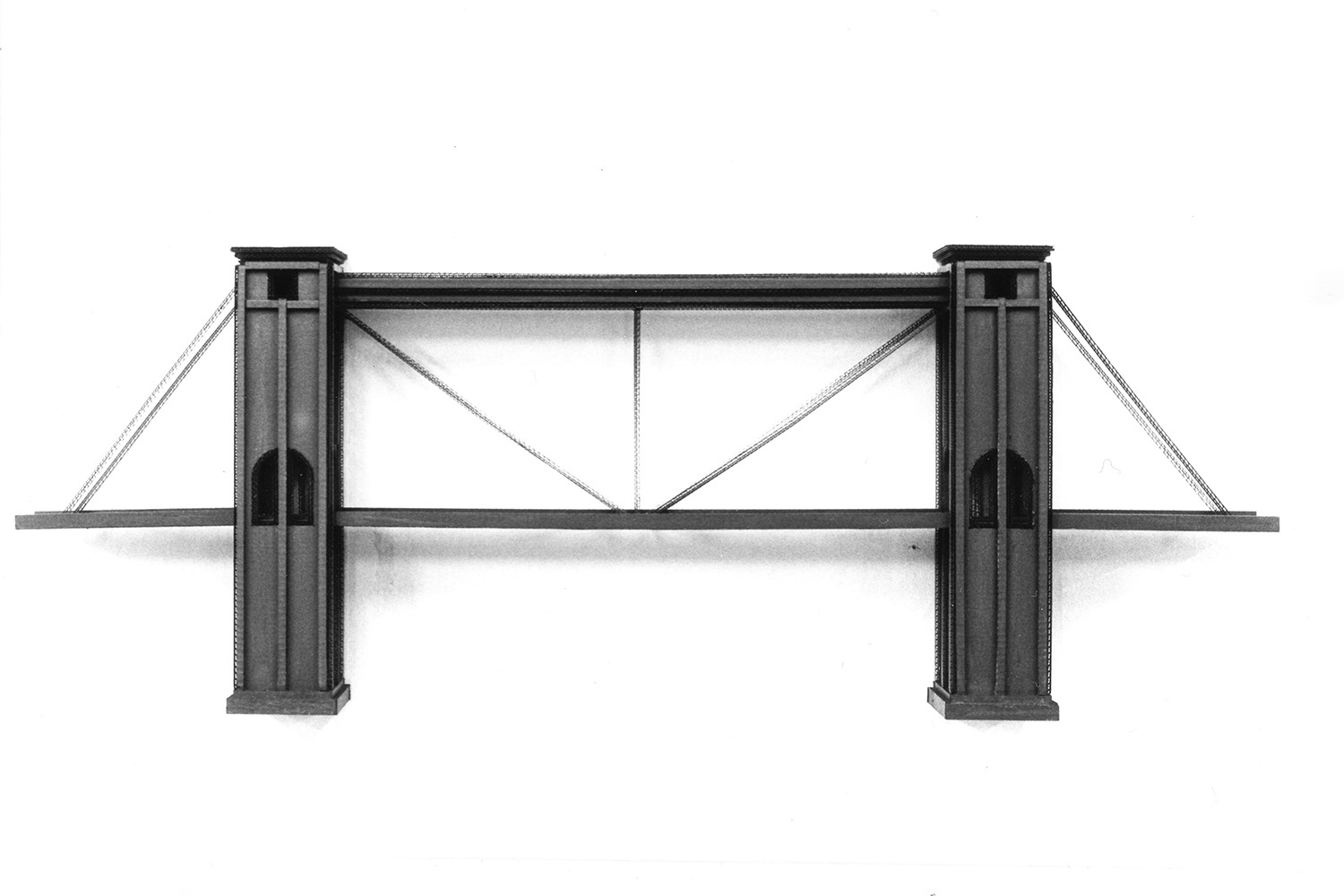
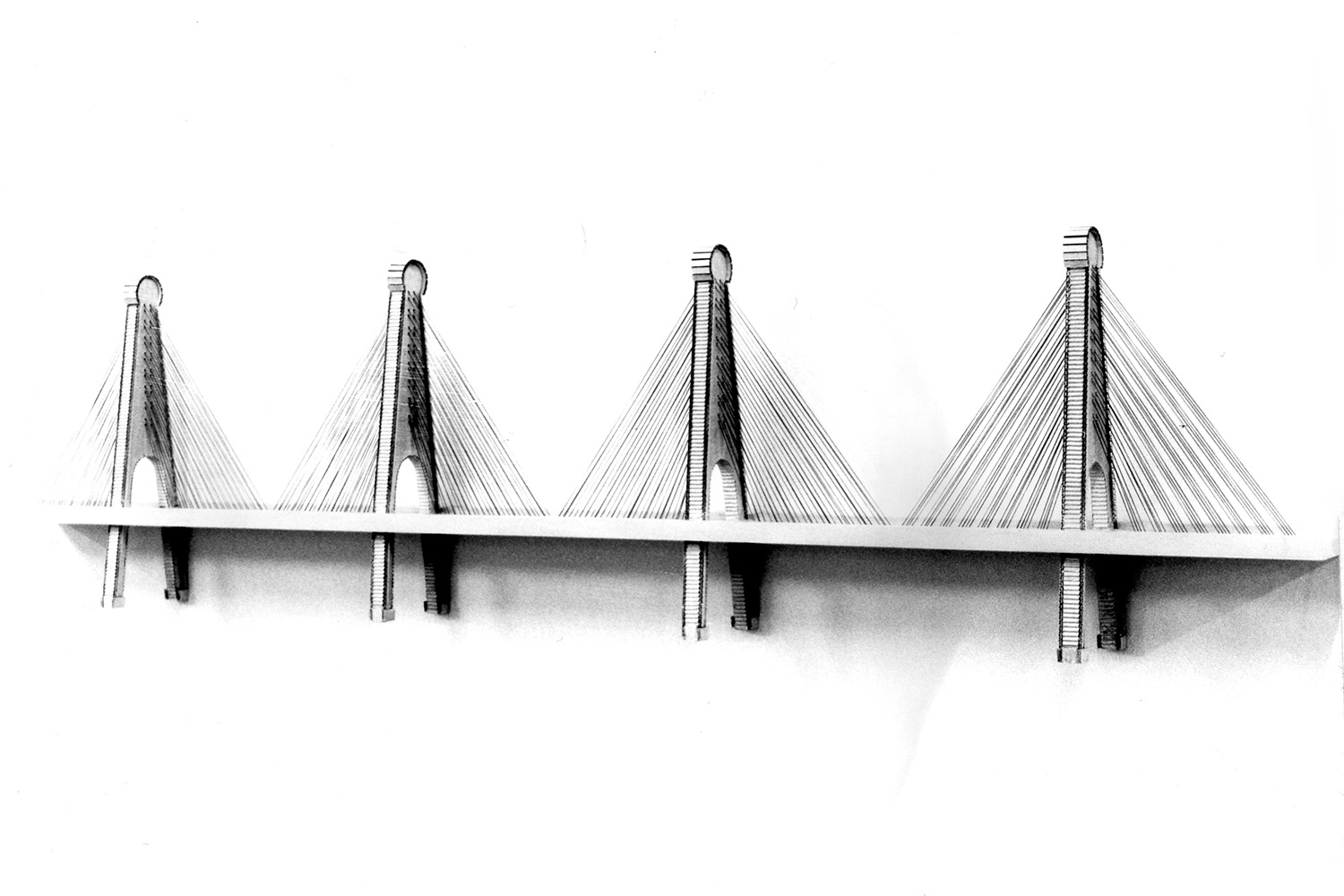
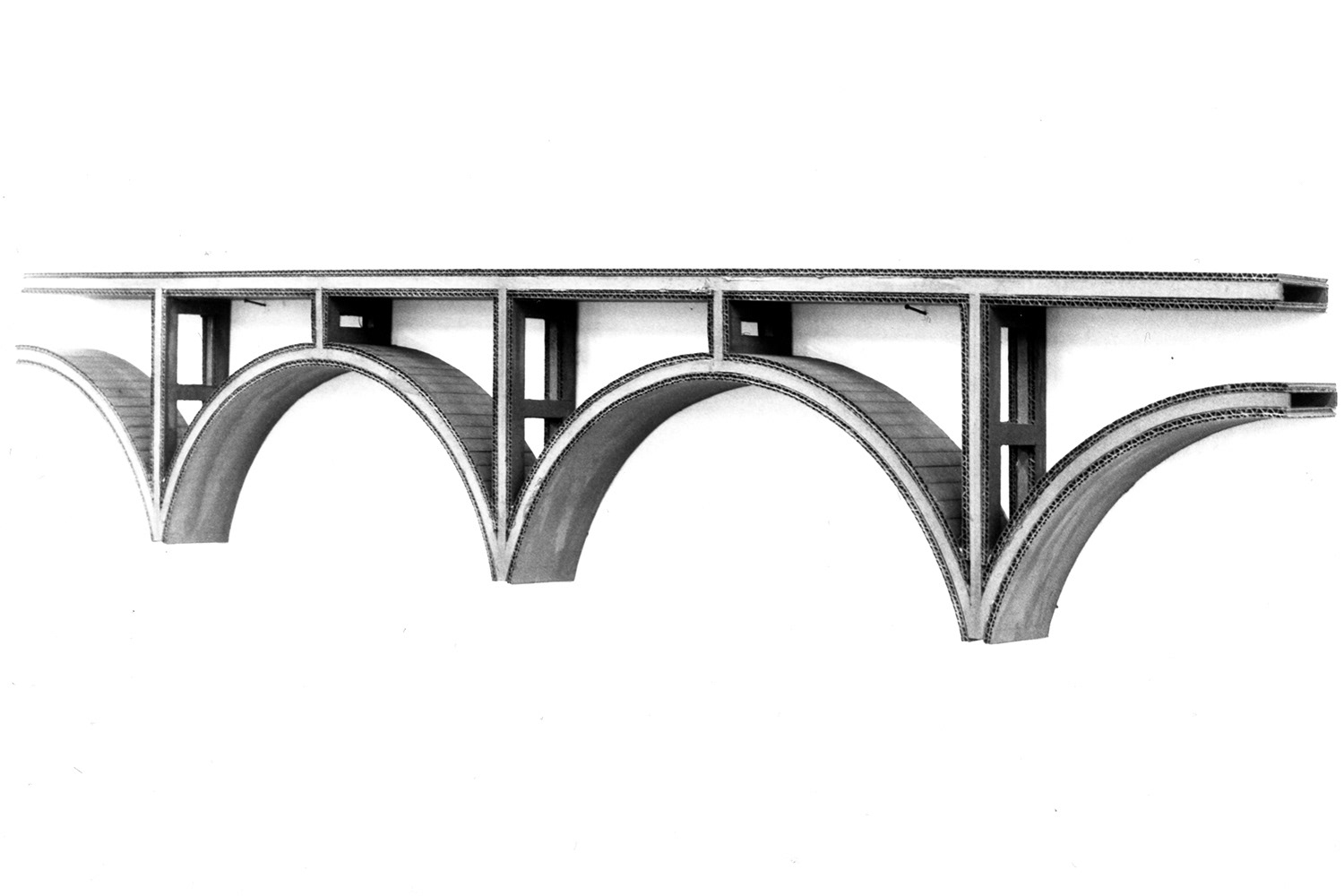
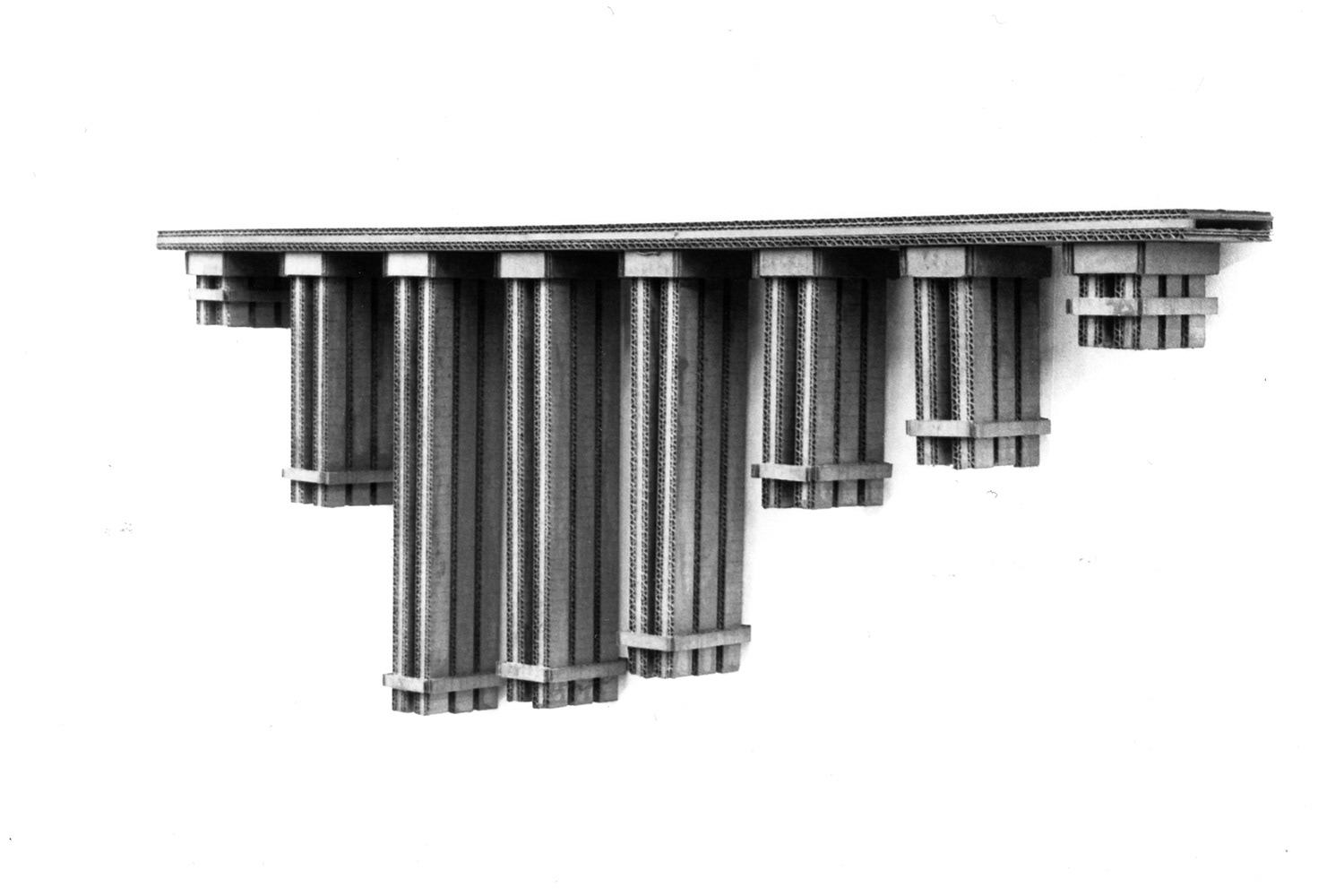
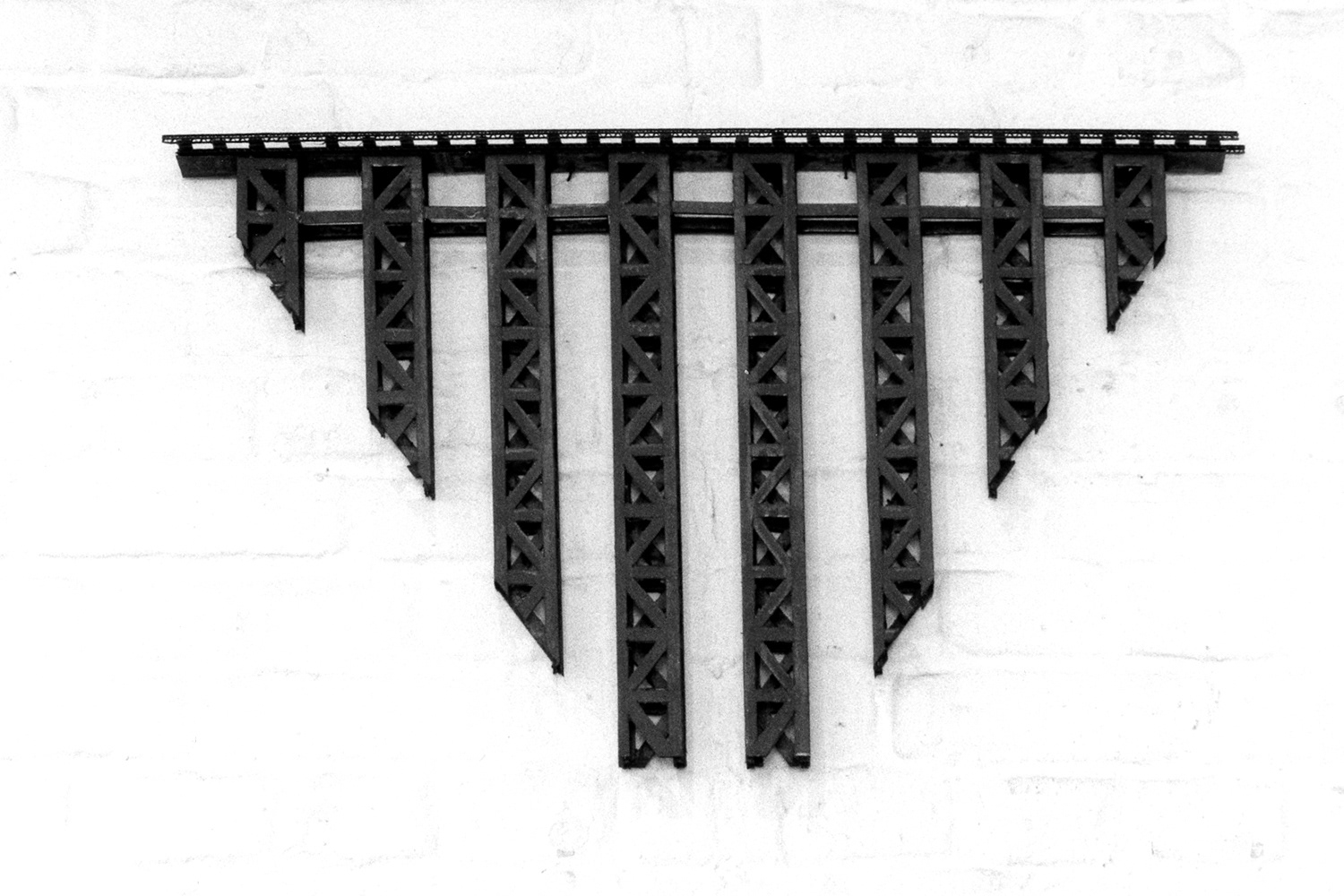
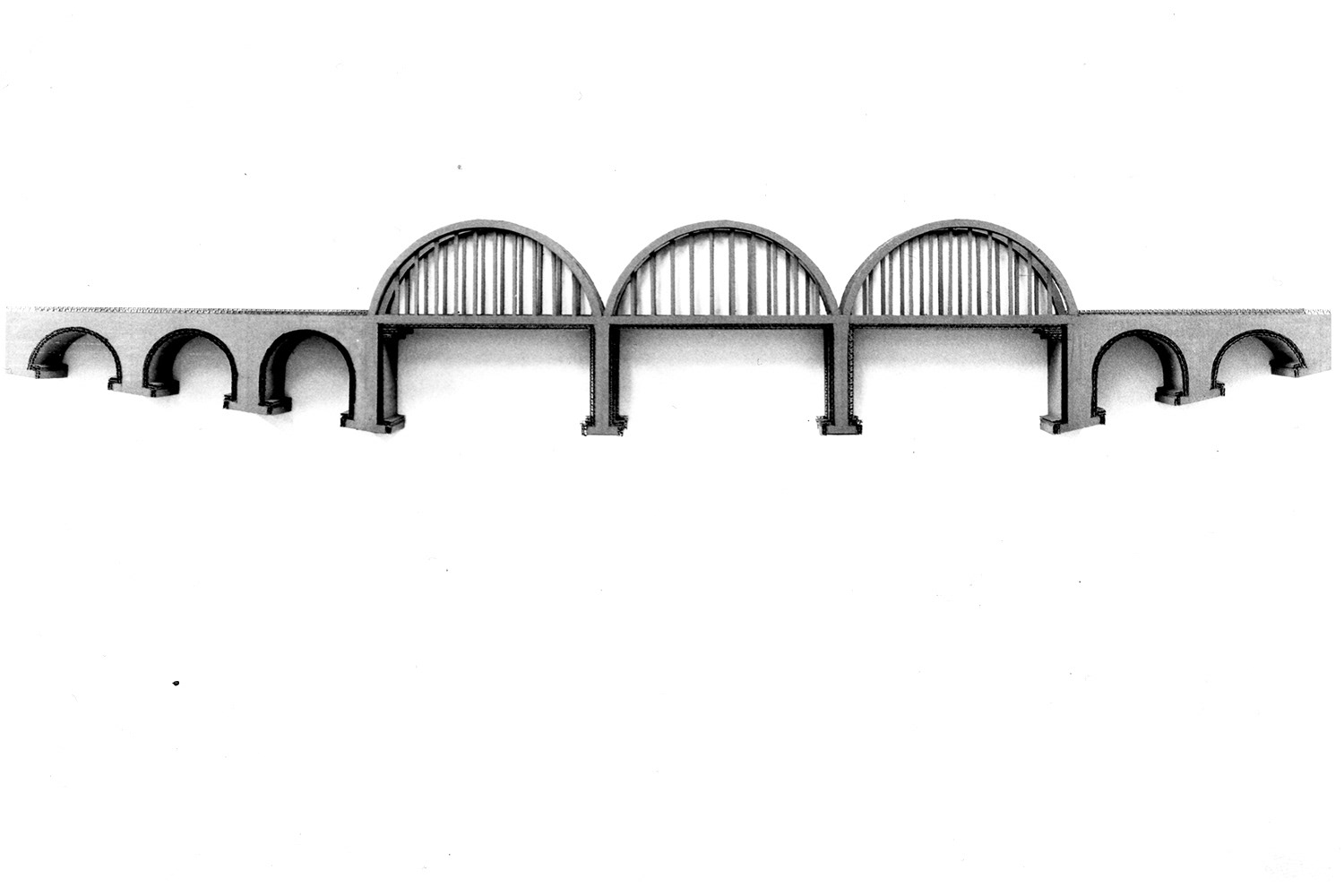
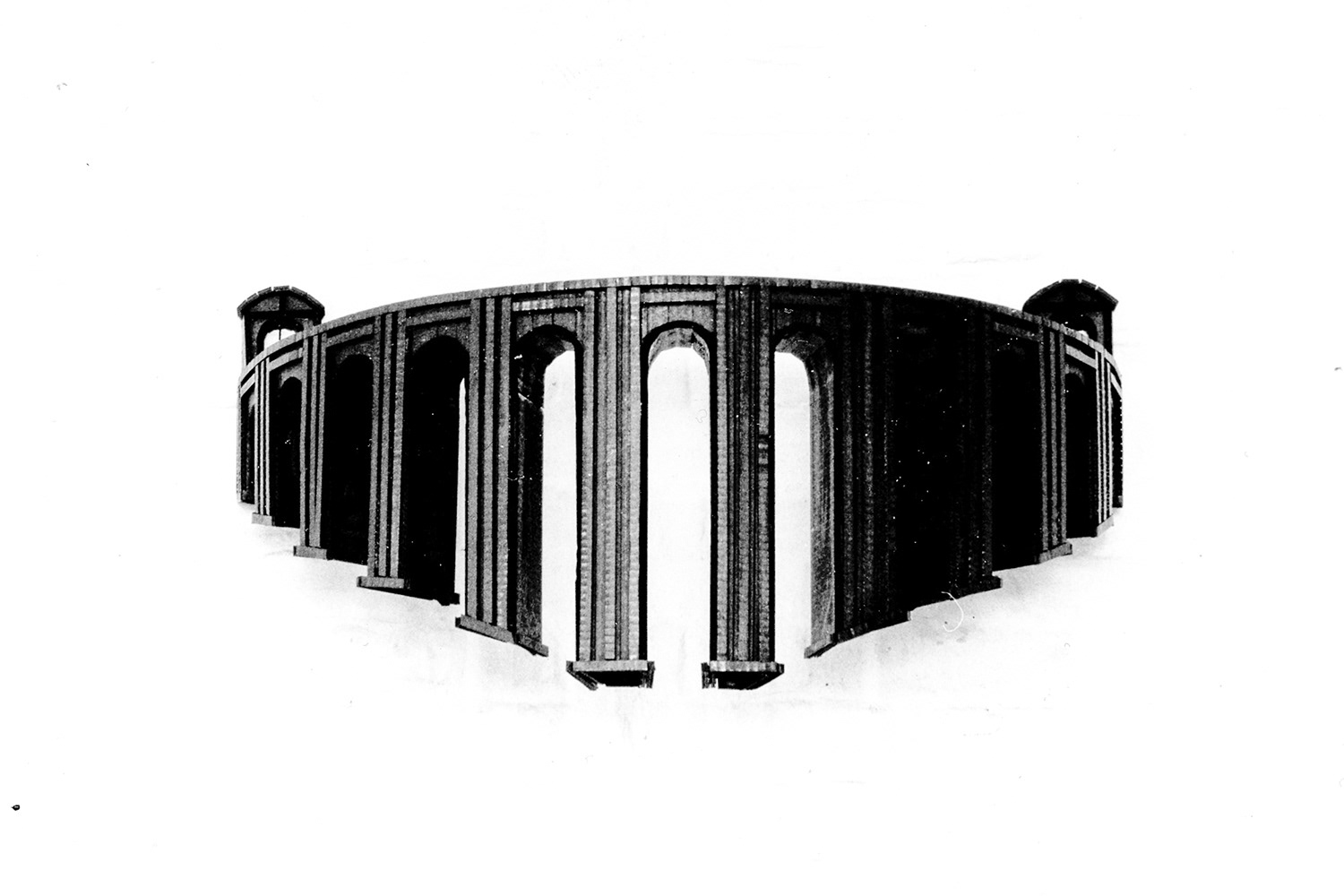
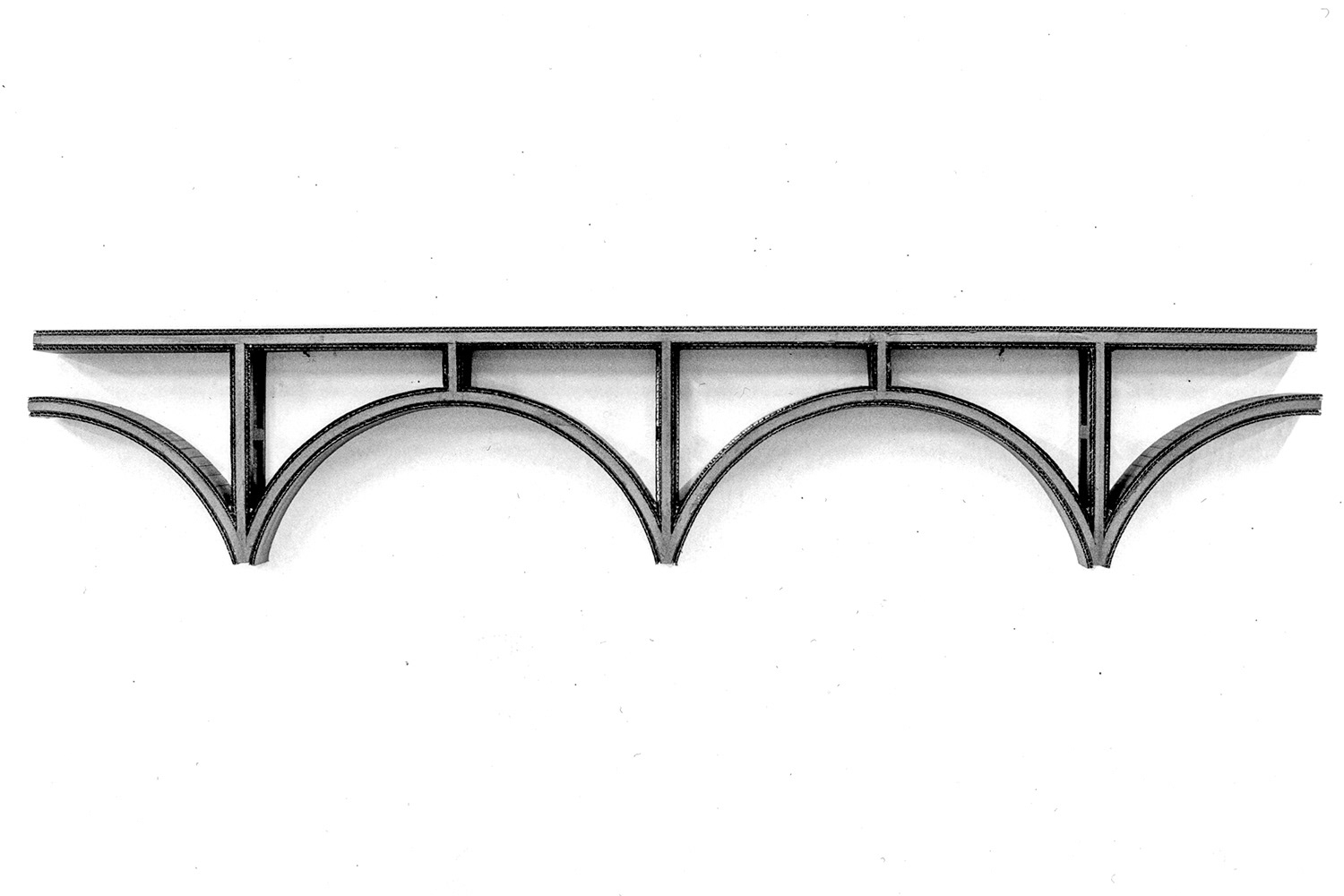
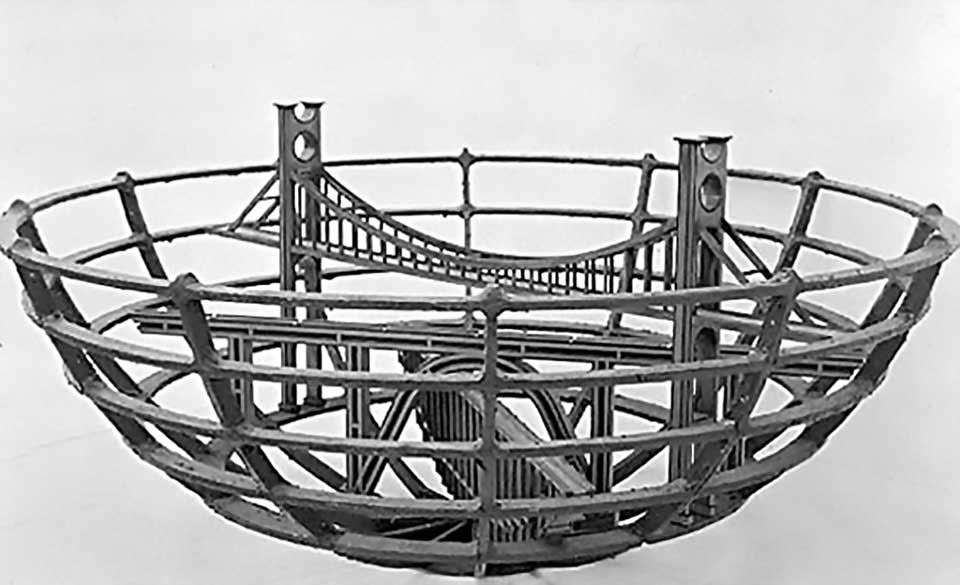
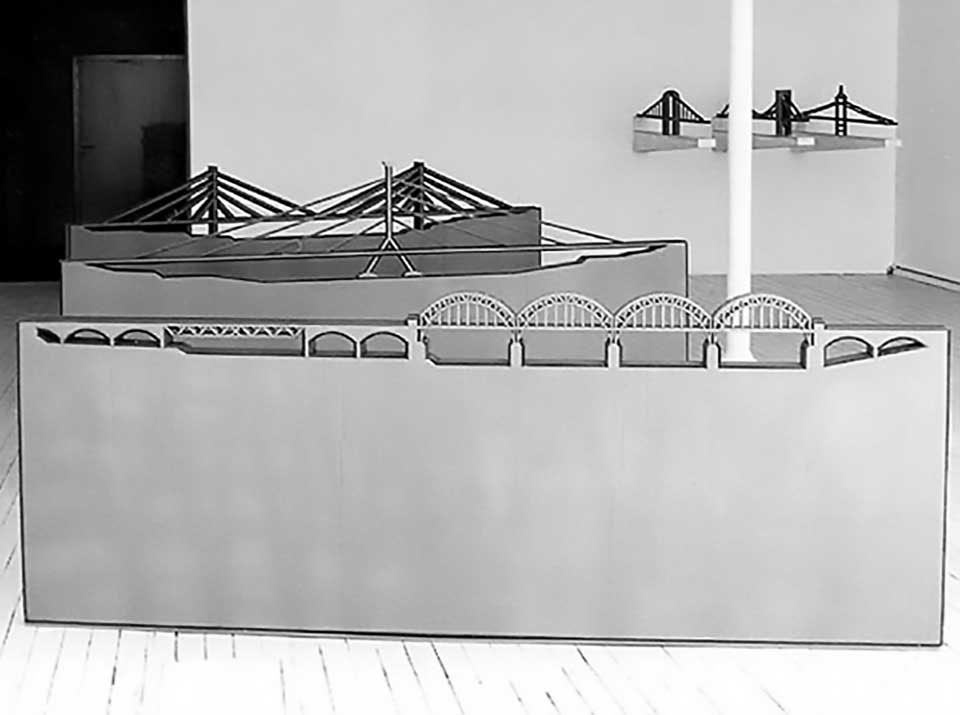
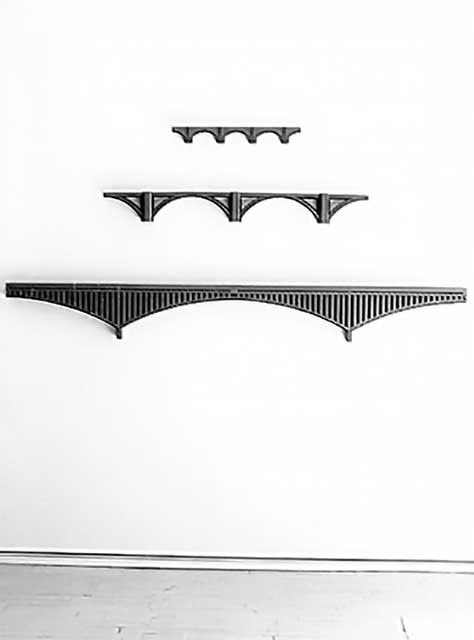
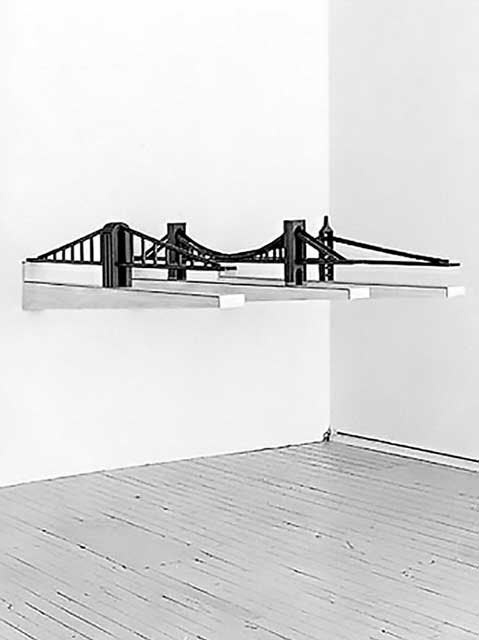
Gather and Talk (1984-1987)
Bridges connect banks – or objects: In several ensembles, including at the Kunstverein Düsseldorf and P.S.1 New York, UFO-like structures float above seating groups or instrument silhouettes. Newspaper adverts, concert forms, dams and TV tower tops mingle with symbols of work, music or luxury. The question of communication becomes a theme: in "Babeltisch" (1987), understanding and linguistic confusion seem to lie close together.
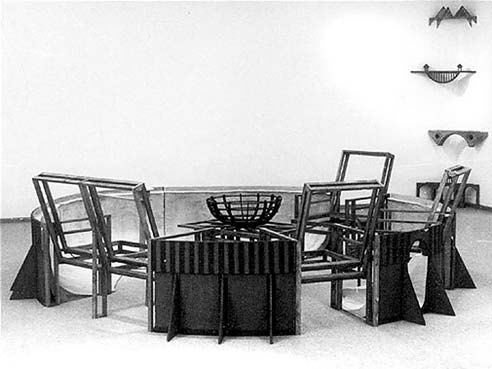
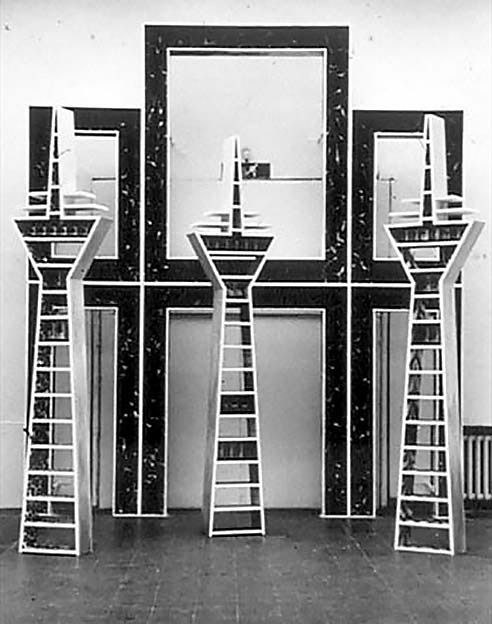
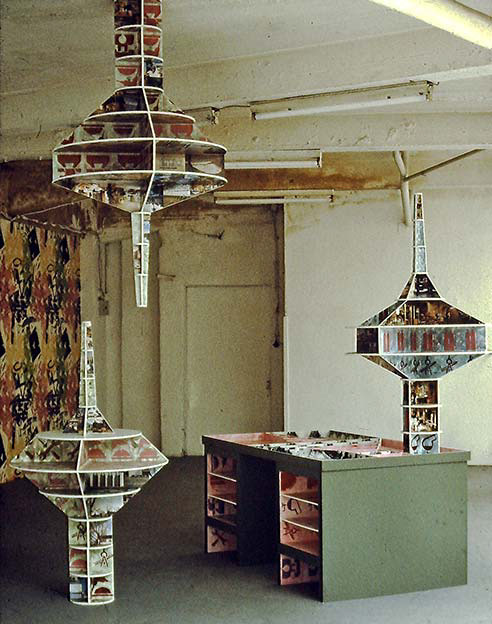
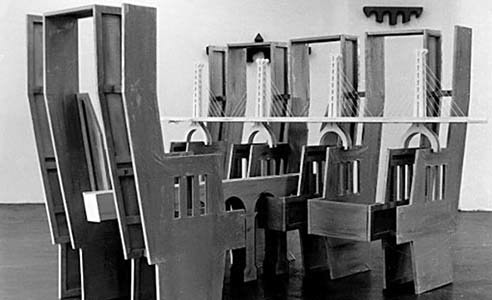
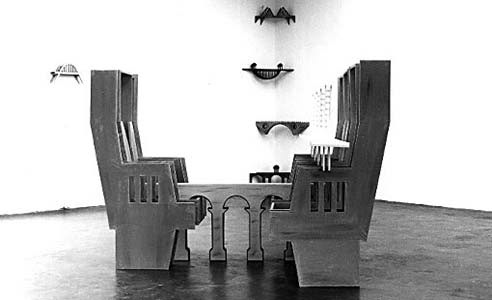
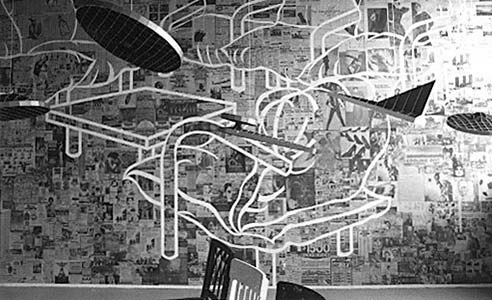
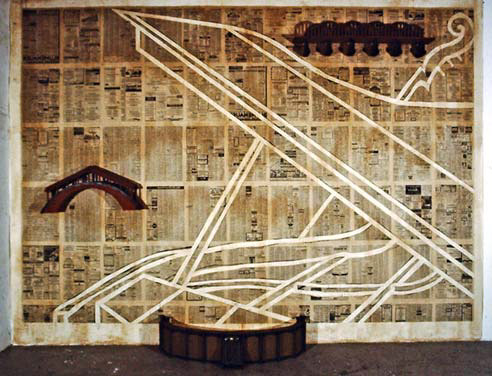
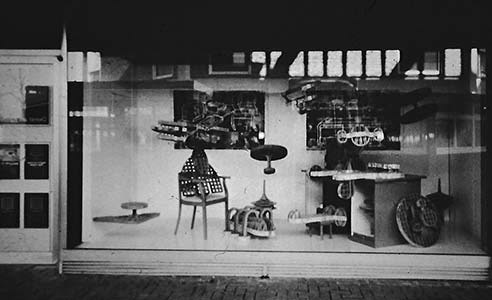
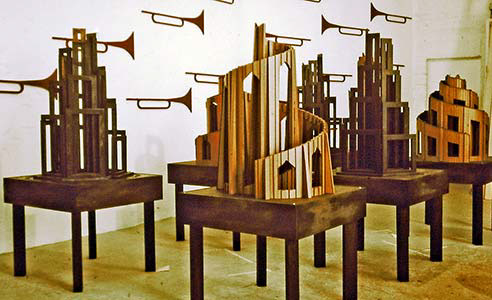
Europe (1984)
Models of Big Ben, the Tower of Pisa and the Eittel Tower are assembled on and around a desk. As crudely constructed maquettes, they symbolically evoke Europe – bureaucracy, diversity and the attempt to live diversity in unity. In the extended version, two further desk symbols are added. The installation is shown in 1984 in Cologne (with a real desk) and in Rotterdam (with built counterparts).
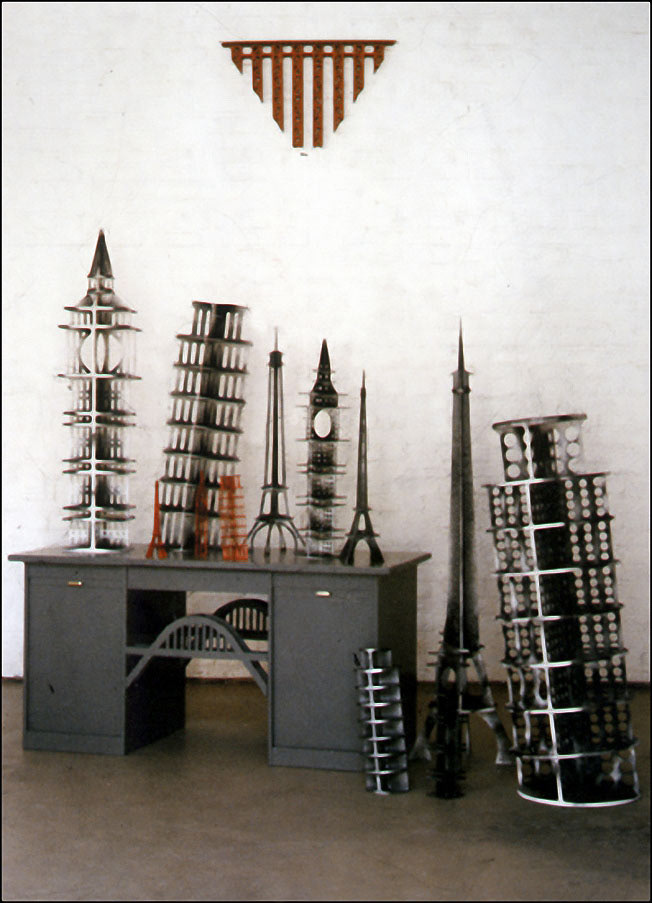

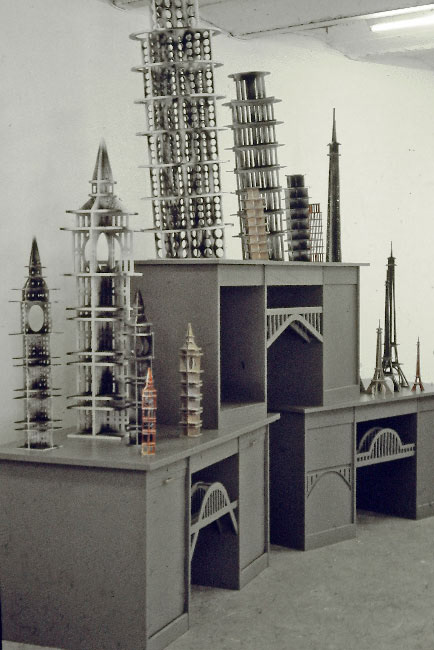
Pier and Ocean (1985)
Towers characterise the skyline of industrial cities. Three watchtowers, television towers or gasometers are grouped along a central, black-painted pier made of wood and plaster. The sculptures are made of red corrugated cardboard – architectural associations meet free imagination. The series was shown in 1985 at Bernier in Athens, later digitally simulated.
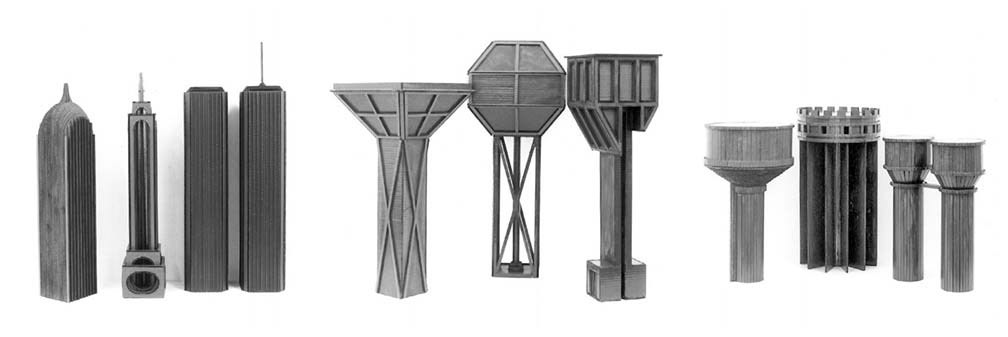
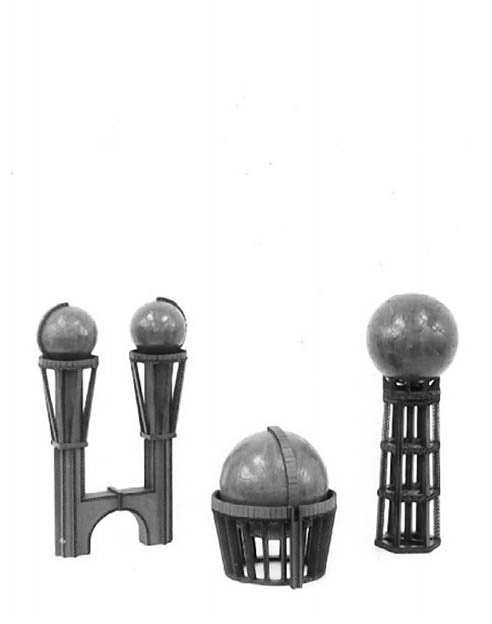
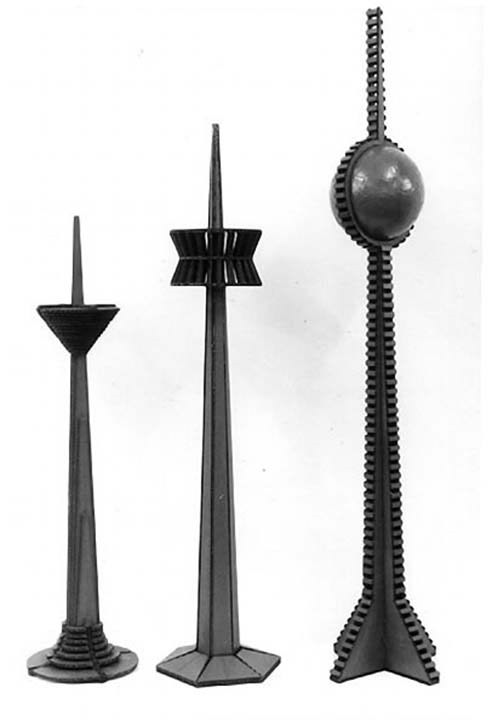
Station Square (1985)
As a horizontal counterpart to the towers of the pier and the ocean, he created canopies, station concourse structures, clocks and columns – also made of corrugated cardboard and sealed with clear varnish. The work is presented by Galerie Konrad Fischer at the Cologne art market in 1985.
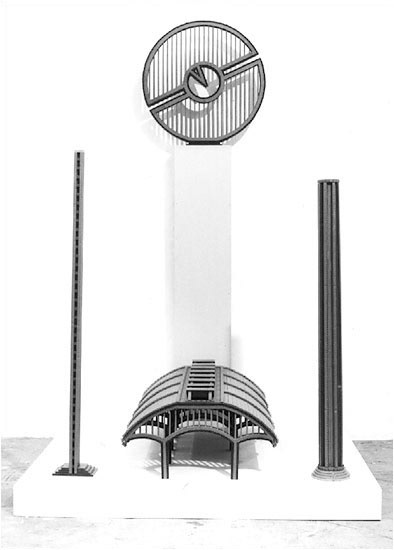
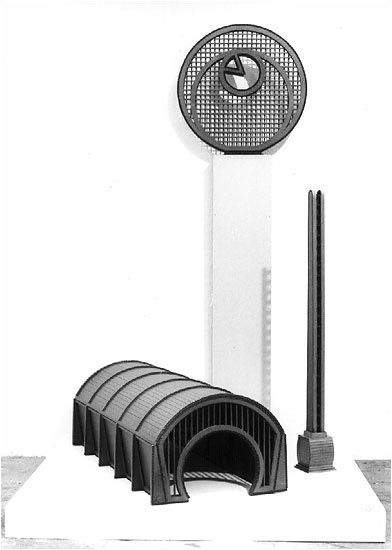
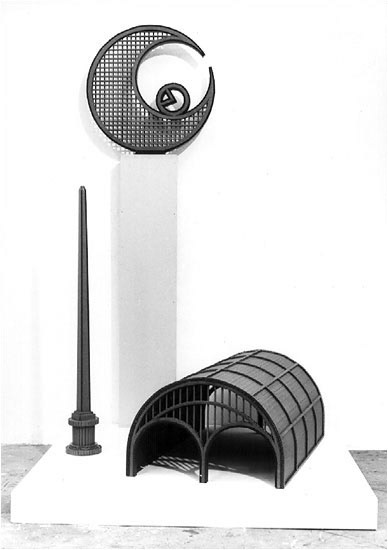
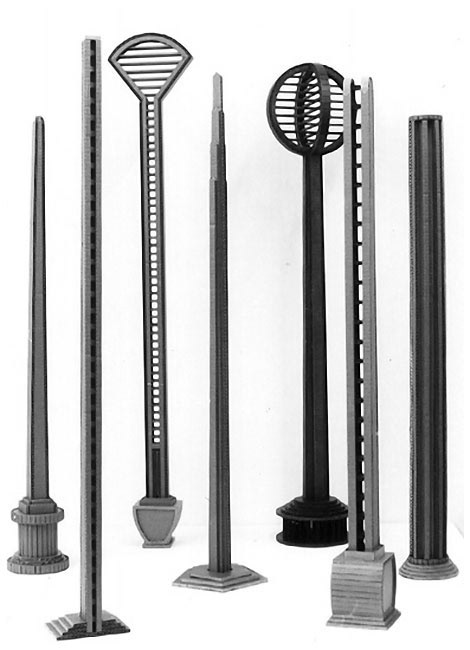
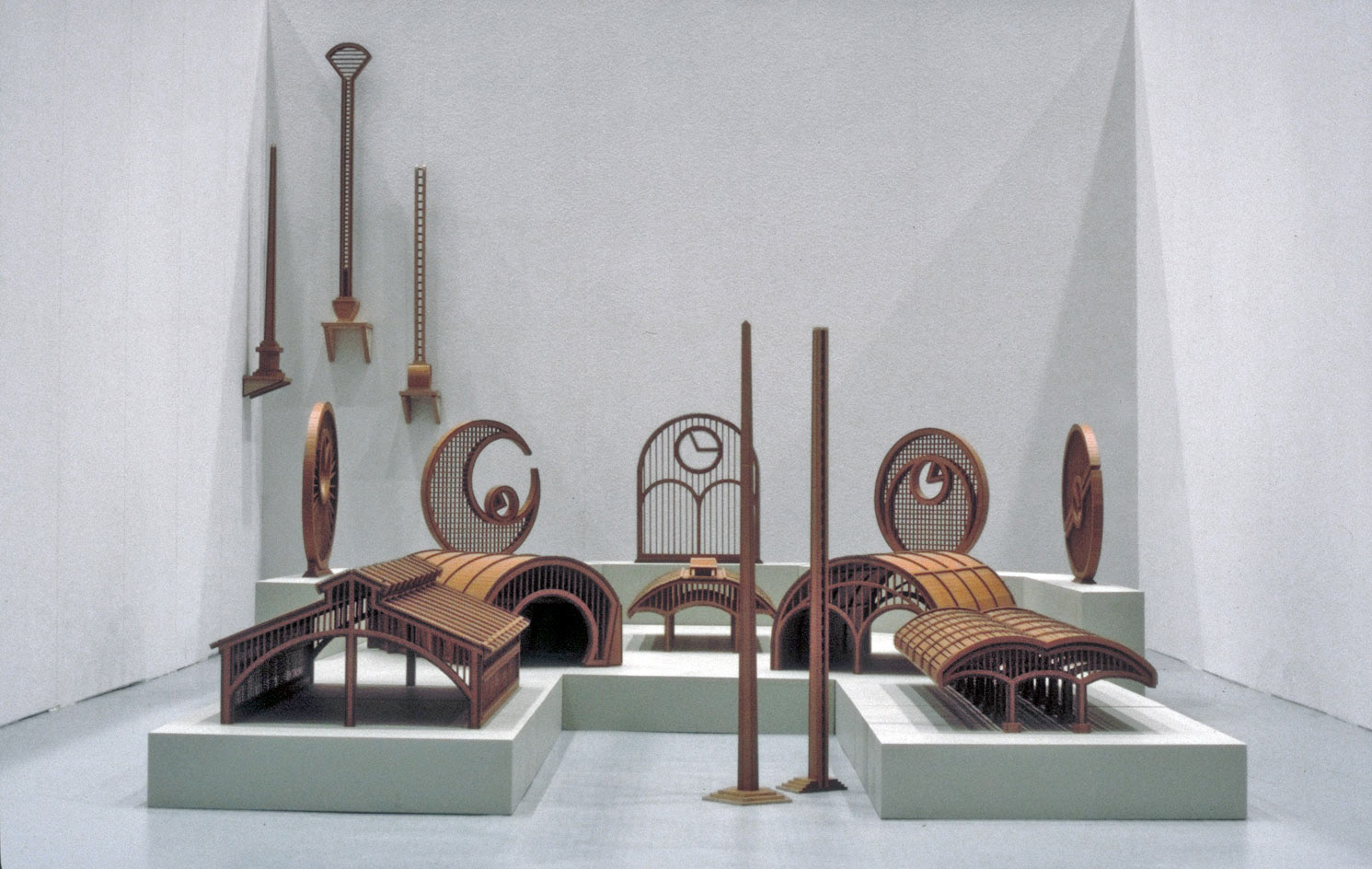
Gold Crests (1986)
Ten steles made of corrugated cardboard surround two sloping tables – the window shapes of the studio are cut into their surface. The sculptures are now larger than life for the first time. In exhibitions in Cologne and Hamburg, the work symbolically thematises power relations between artists, curators and institutions. A fence as a mural serves as a background.
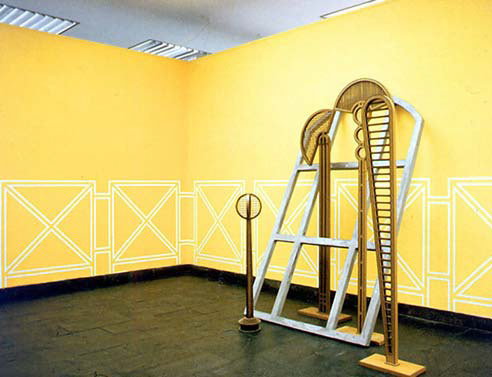
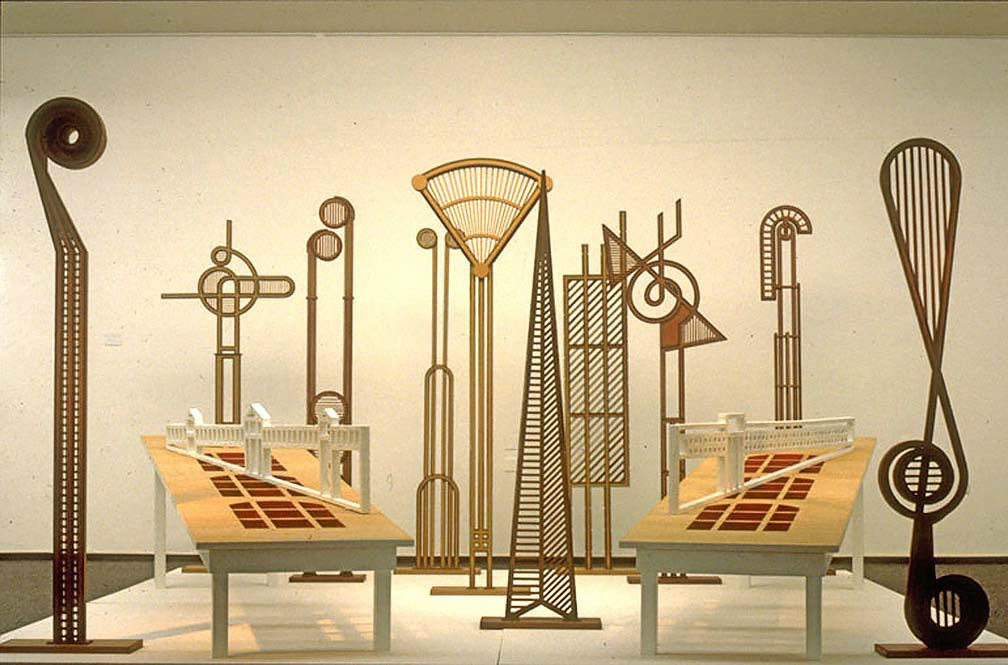
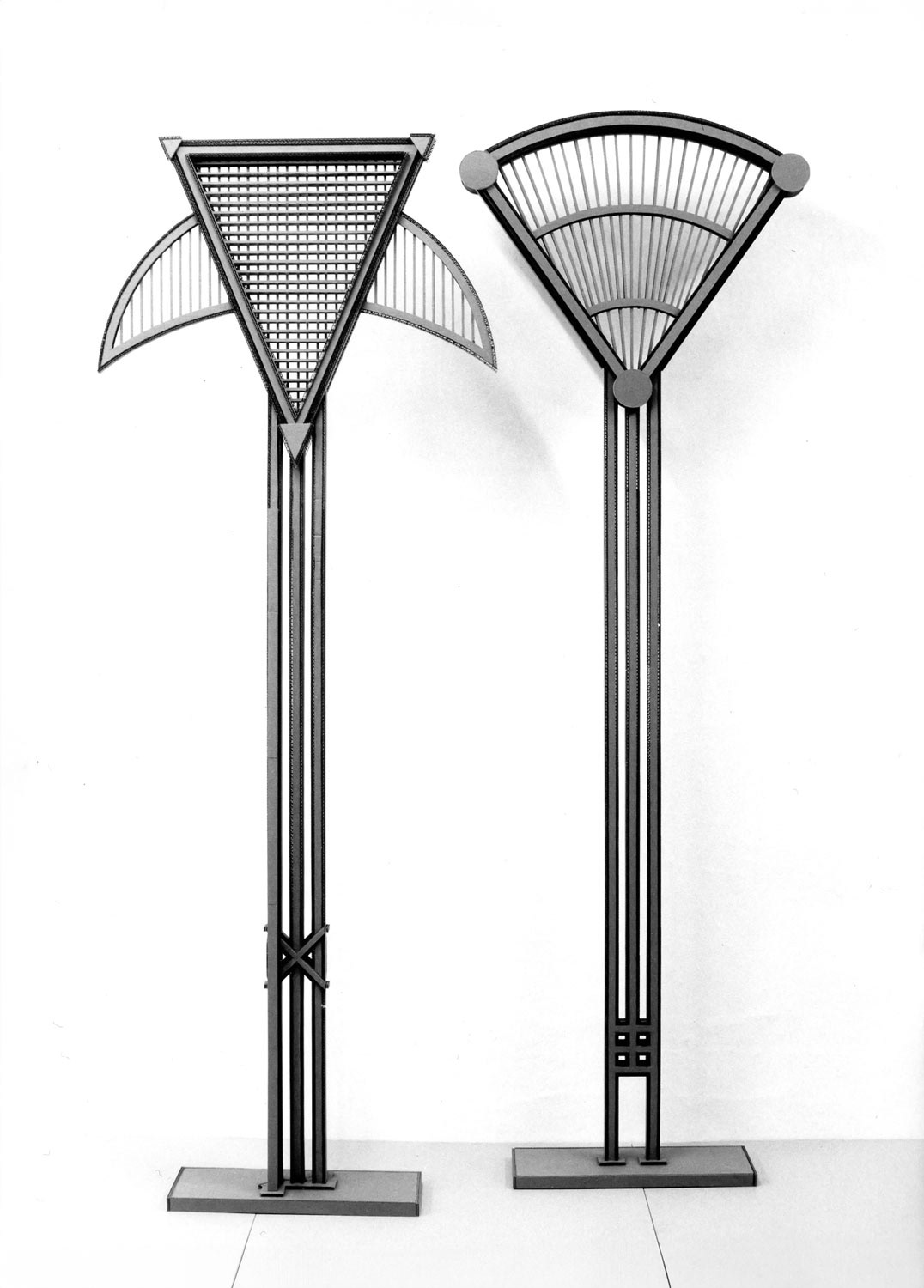
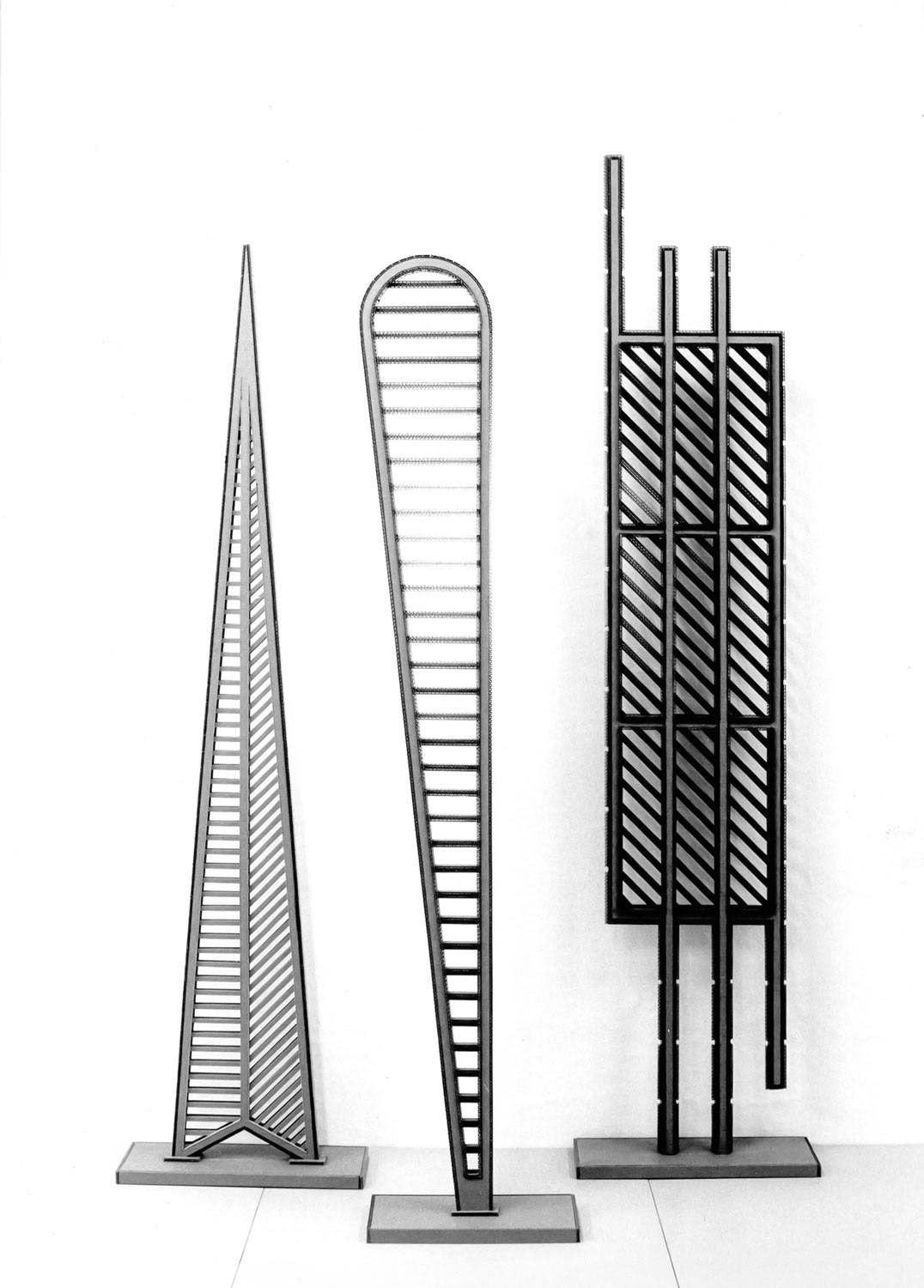
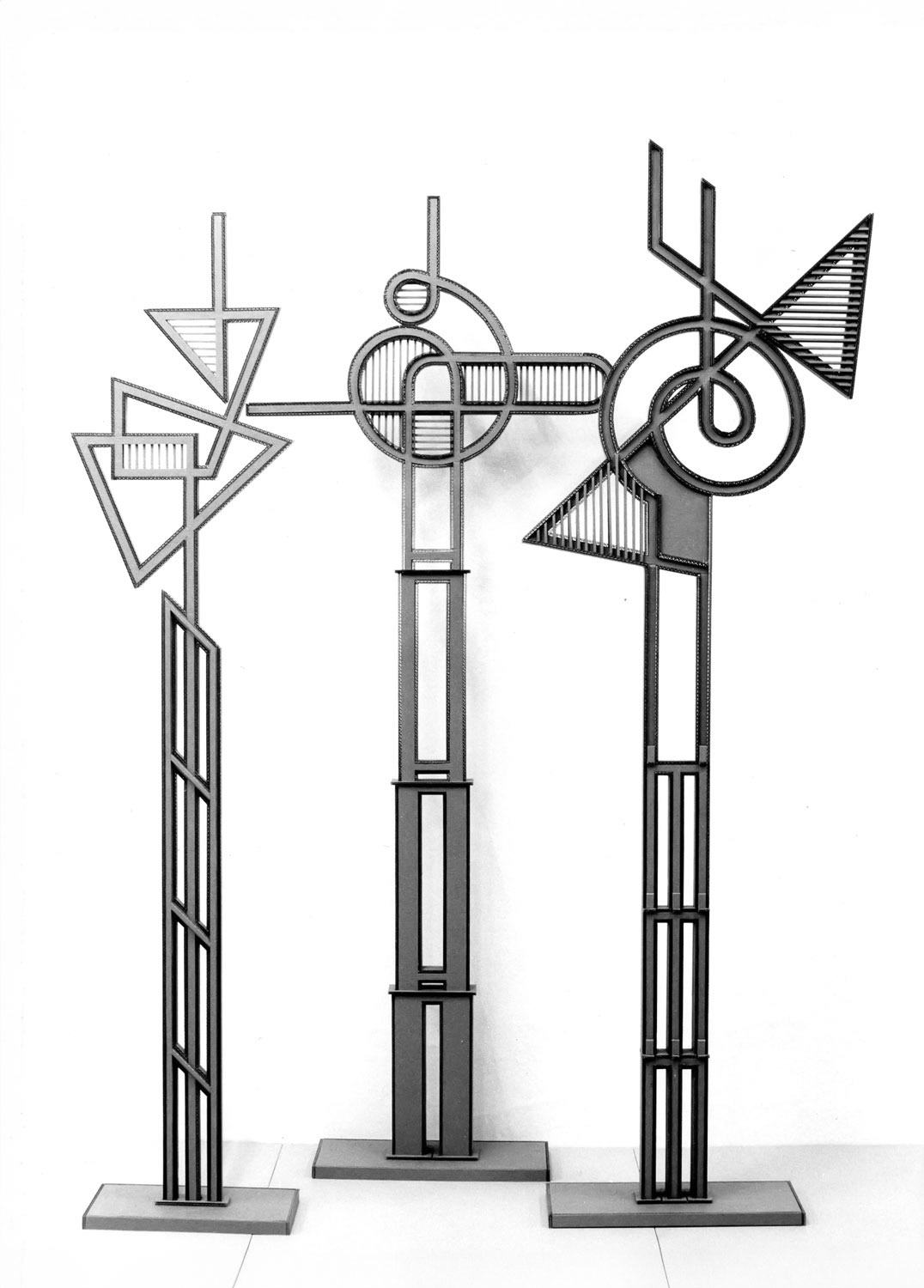
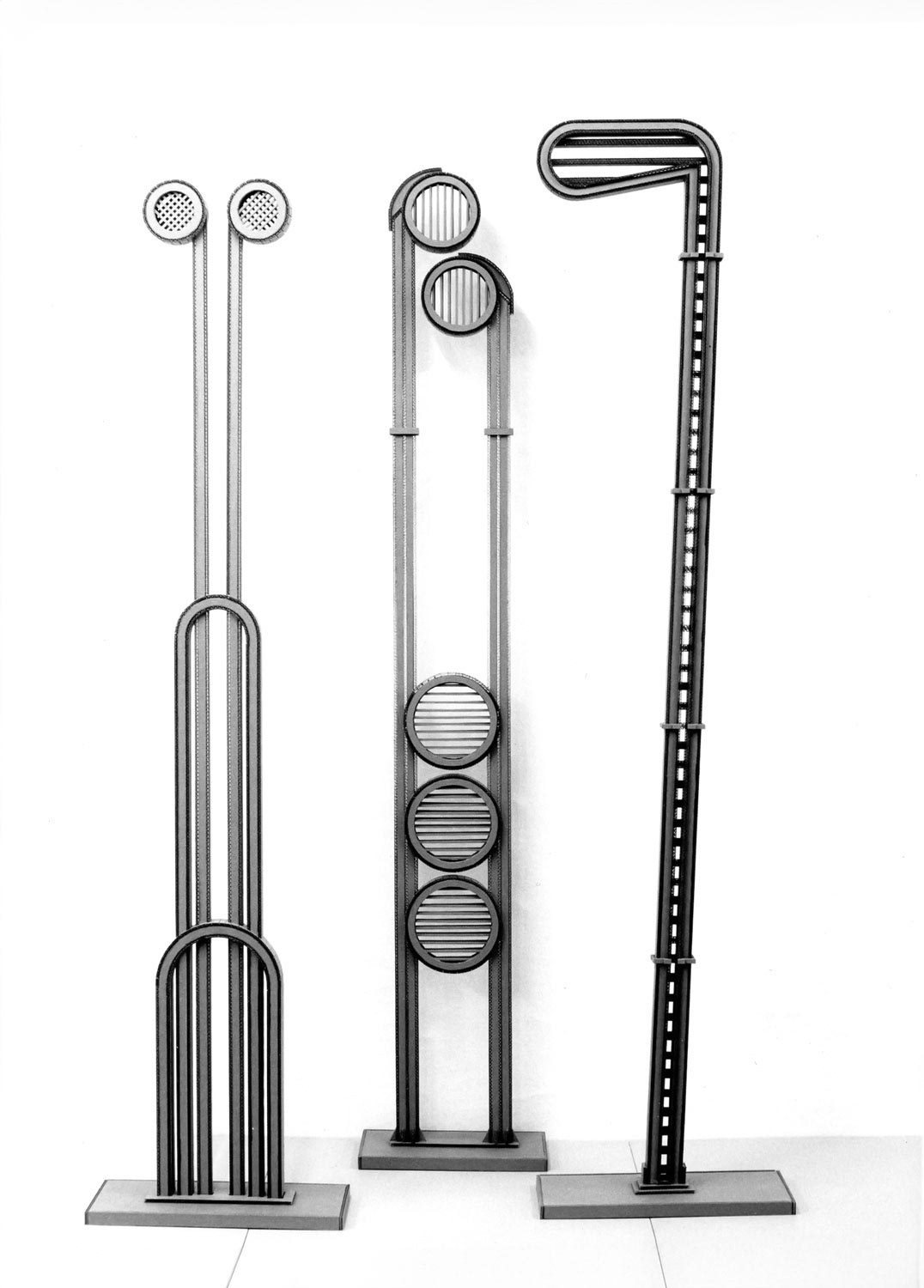
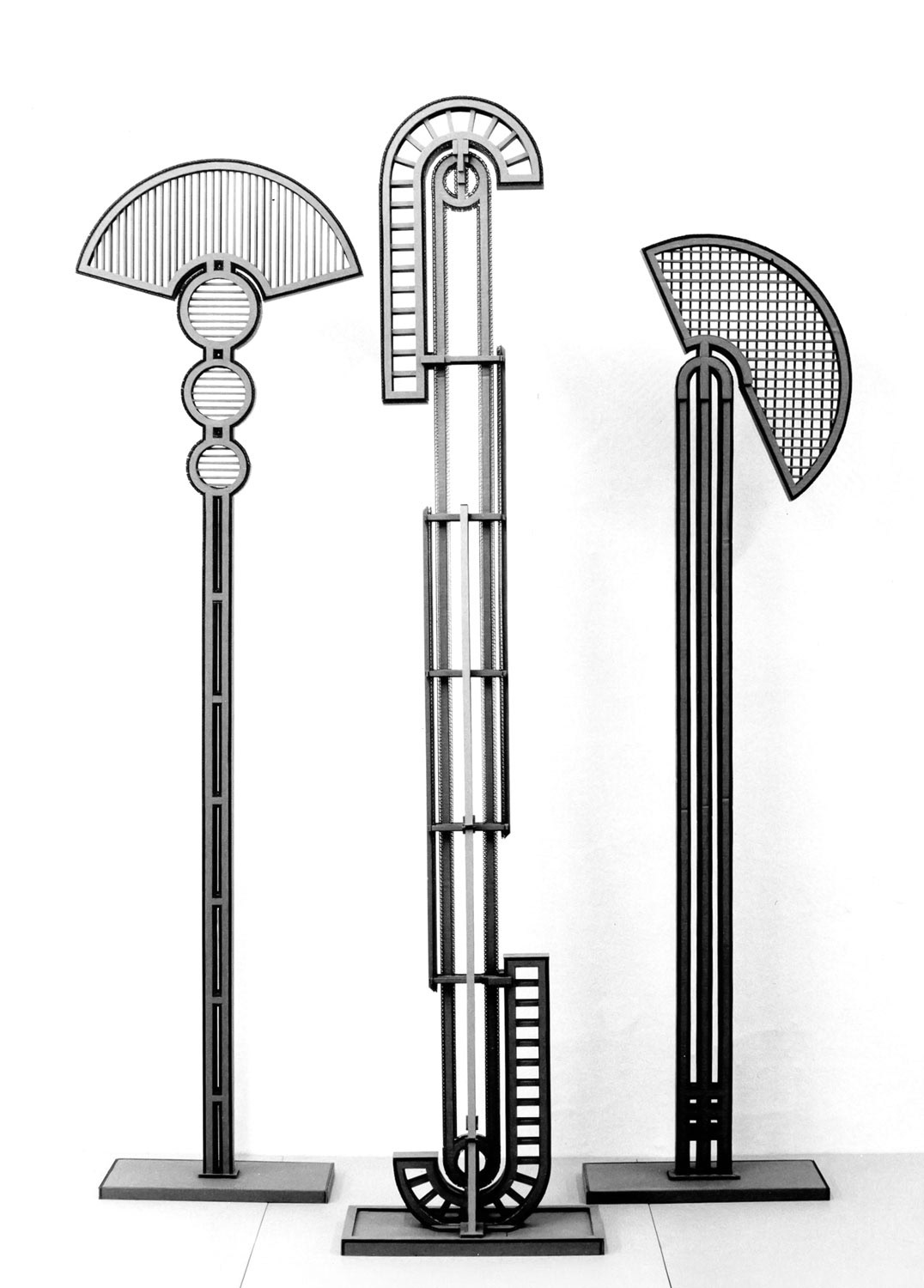
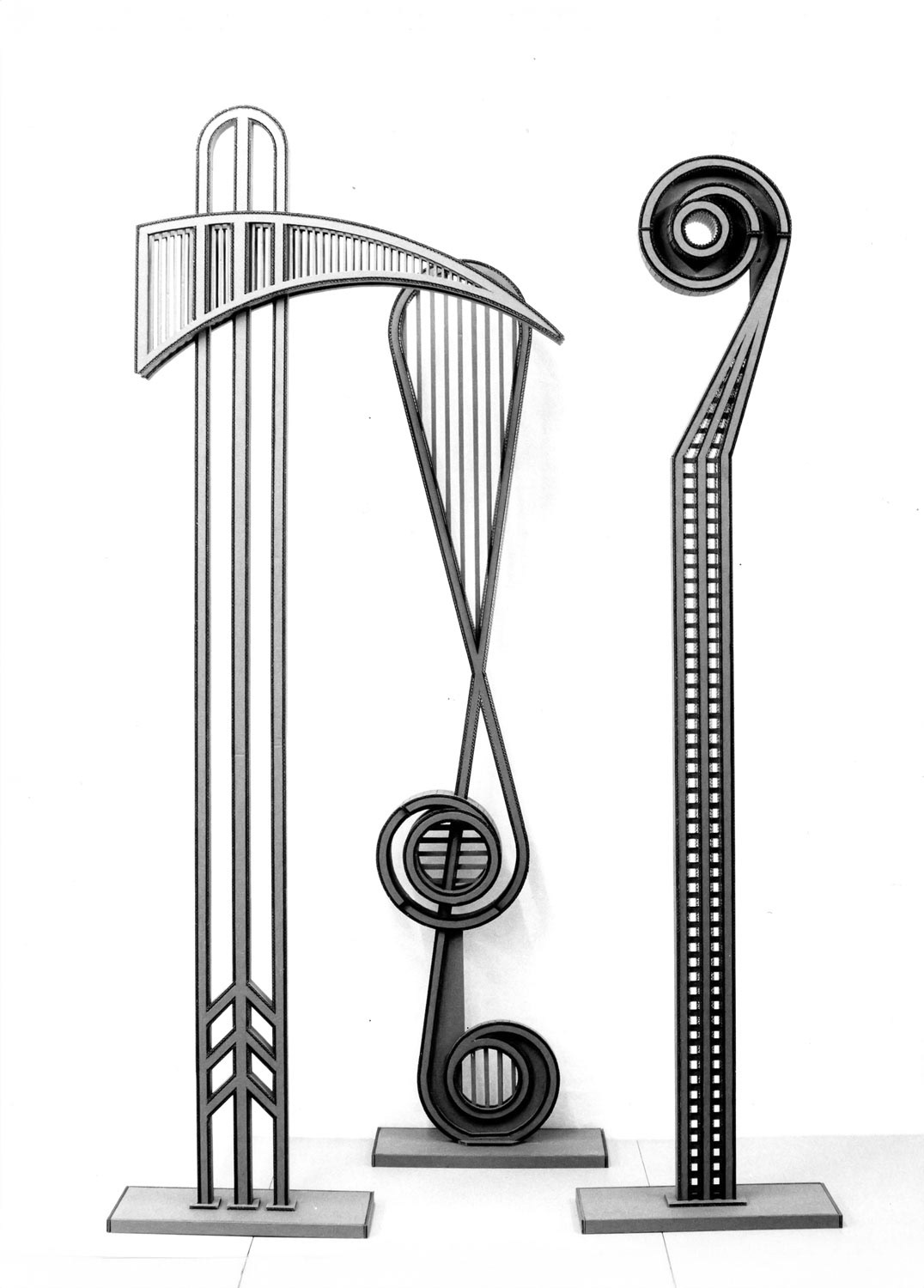
Facades (1986)
Using wooden slats instead of corrugated cardboard changes the construction and appearance. Horizontally layered frames are reminiscent of architectural façades – red in the room, blue on the wall. The series is shown at Galerie Fischer in Düsseldorf in 1986. The vertical sculptures increasingly detach themselves from symbolism and approach formal translations of drawings into space.
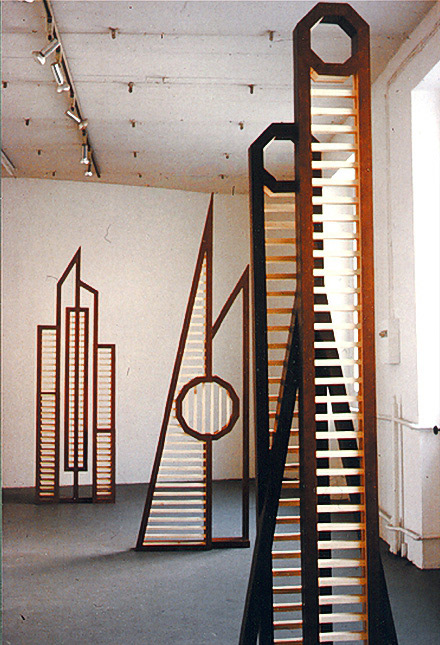
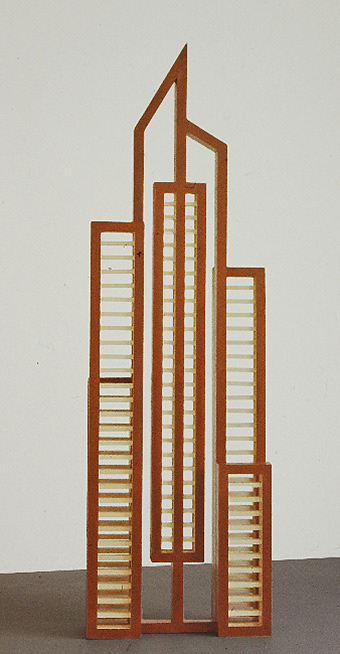
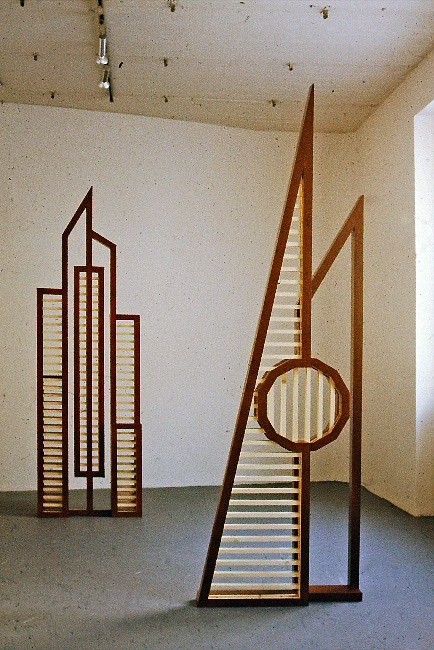
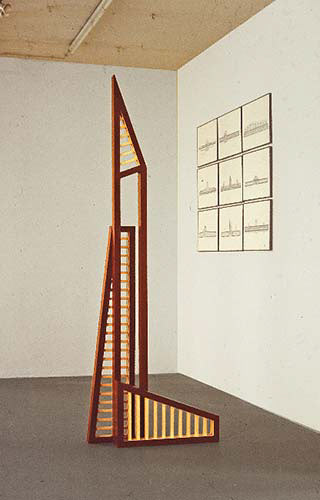
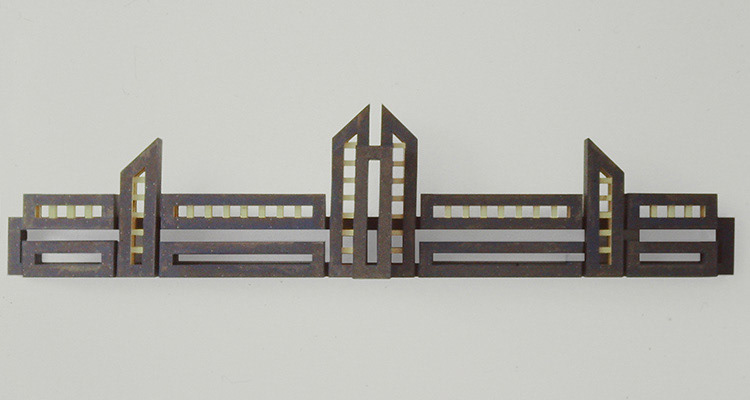
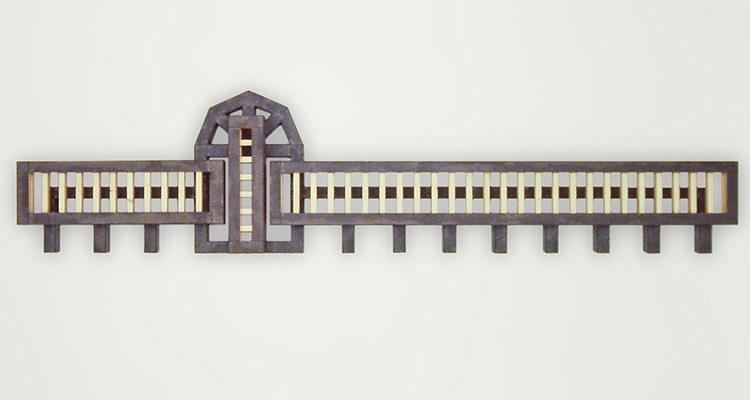
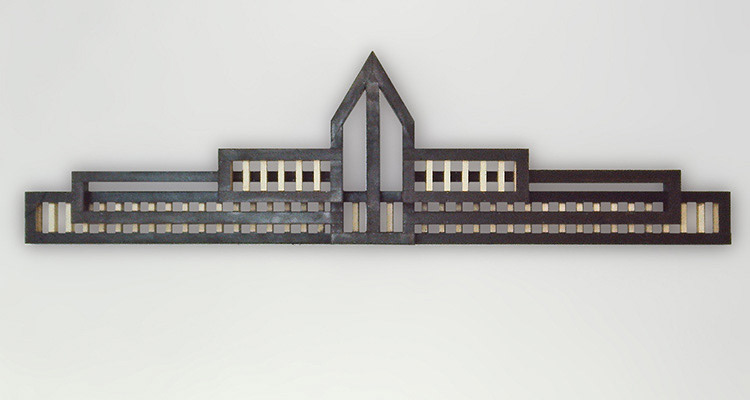
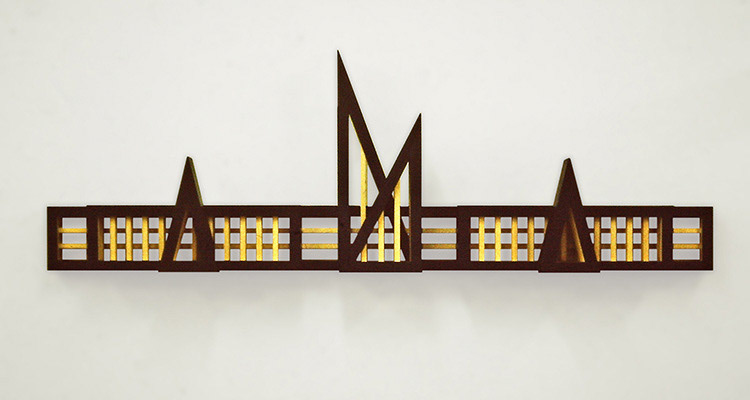
Offices (1986)
For an exhibition at Tucci Russo in Turin, he created new sculptures based on the façade structure – now in yellow. The standing forms appear monumental, almost official. The "Gold Crests" are part of the exhibition and are given an additional interpretation in this new context.
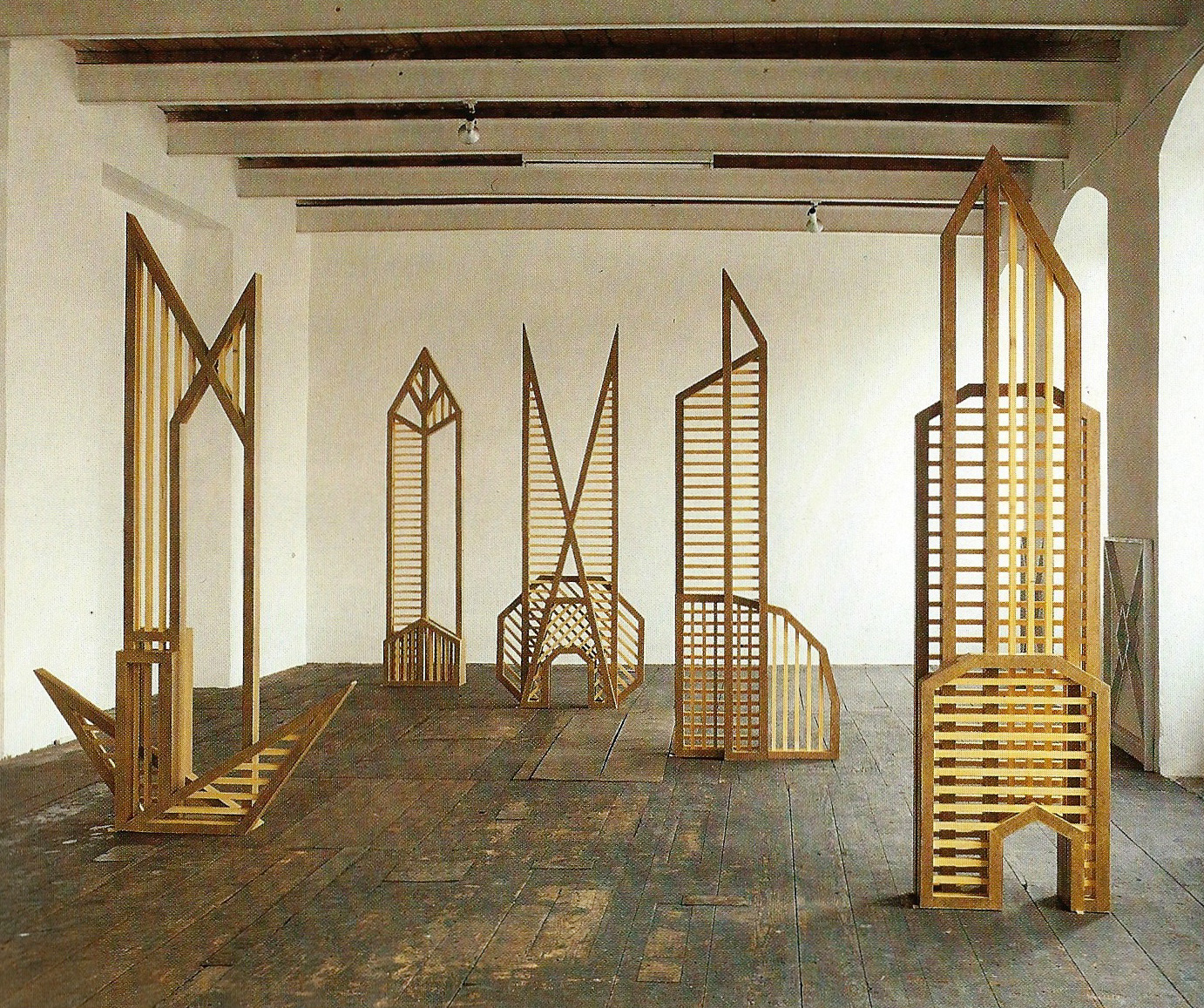
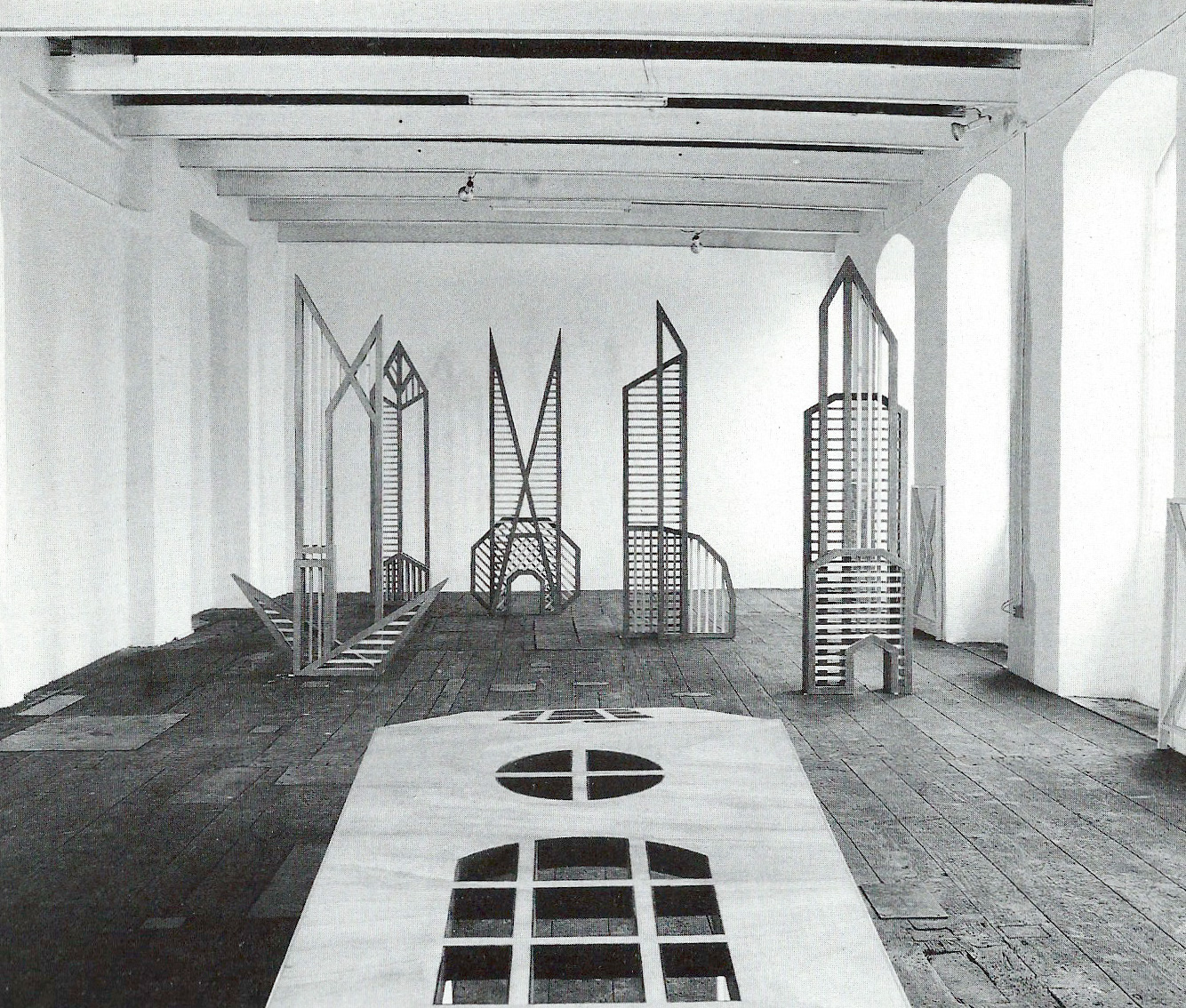
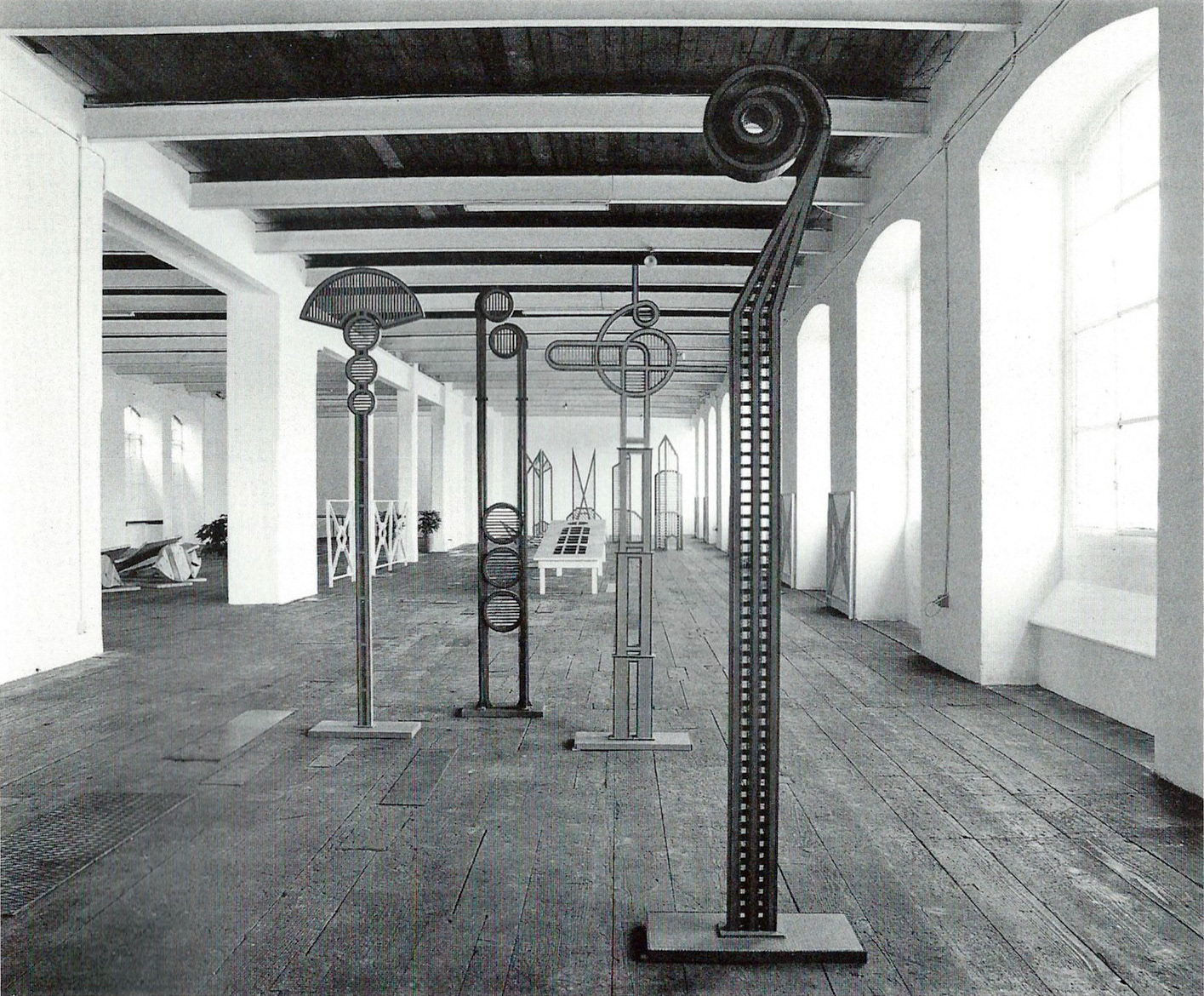
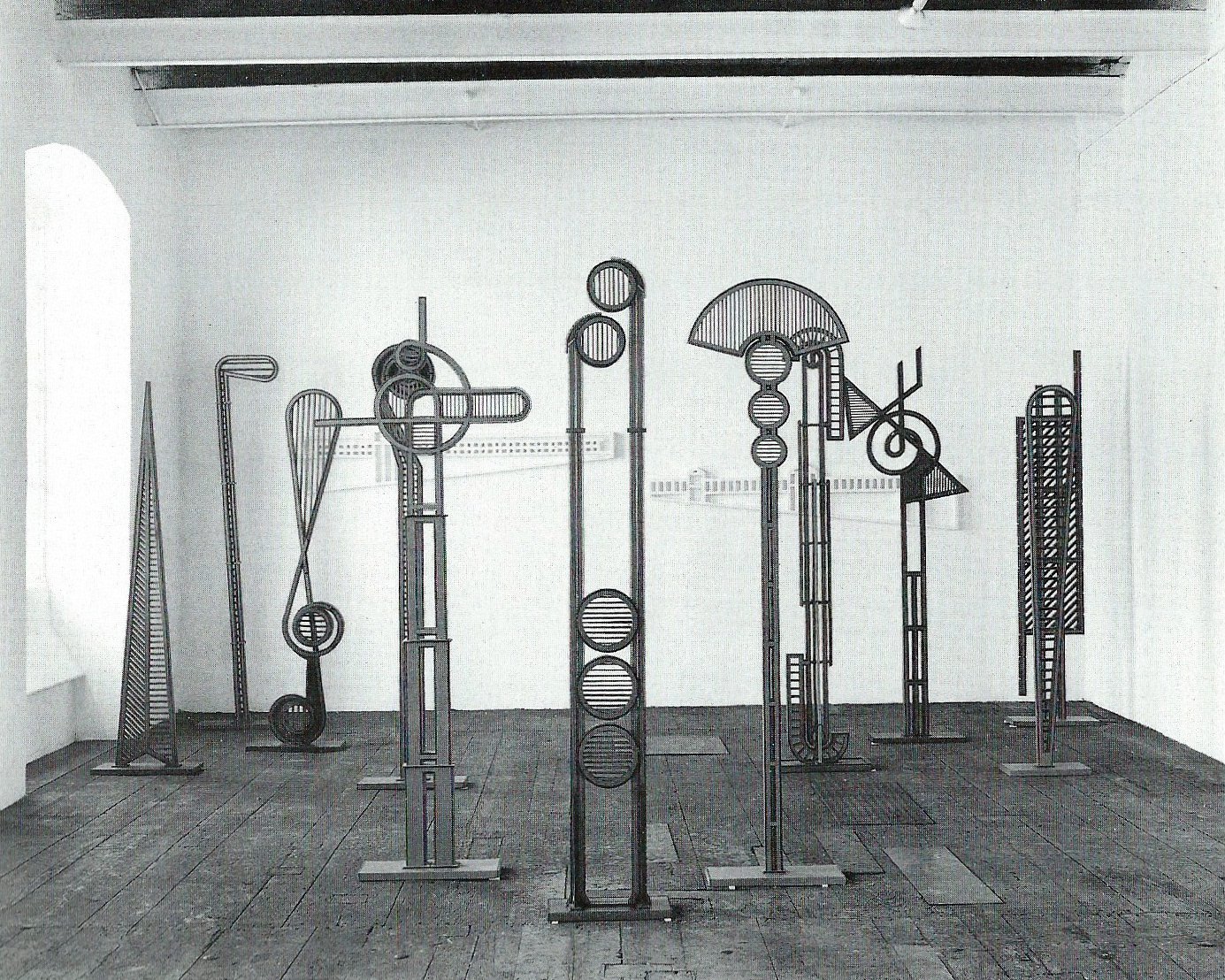
Park (1987)
For the 1987 monumenta sculpture biennial in Middelheim, an ensemble of lantern, bench and fence was created – inspired by earlier sculpture series. The park as a public space is provided in an abstract form with "useful" elements whose shape refers to bridges, towers and façades.
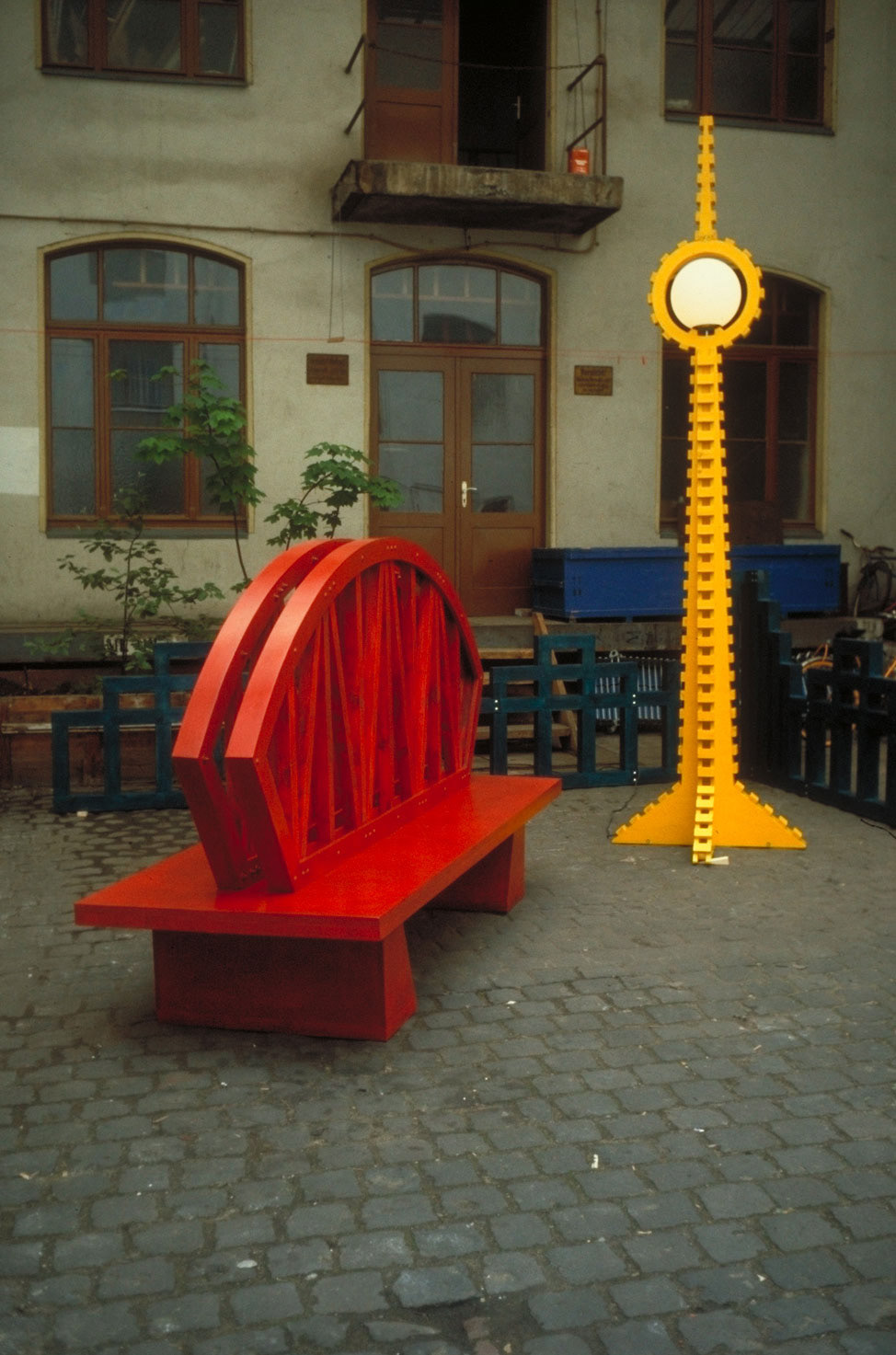
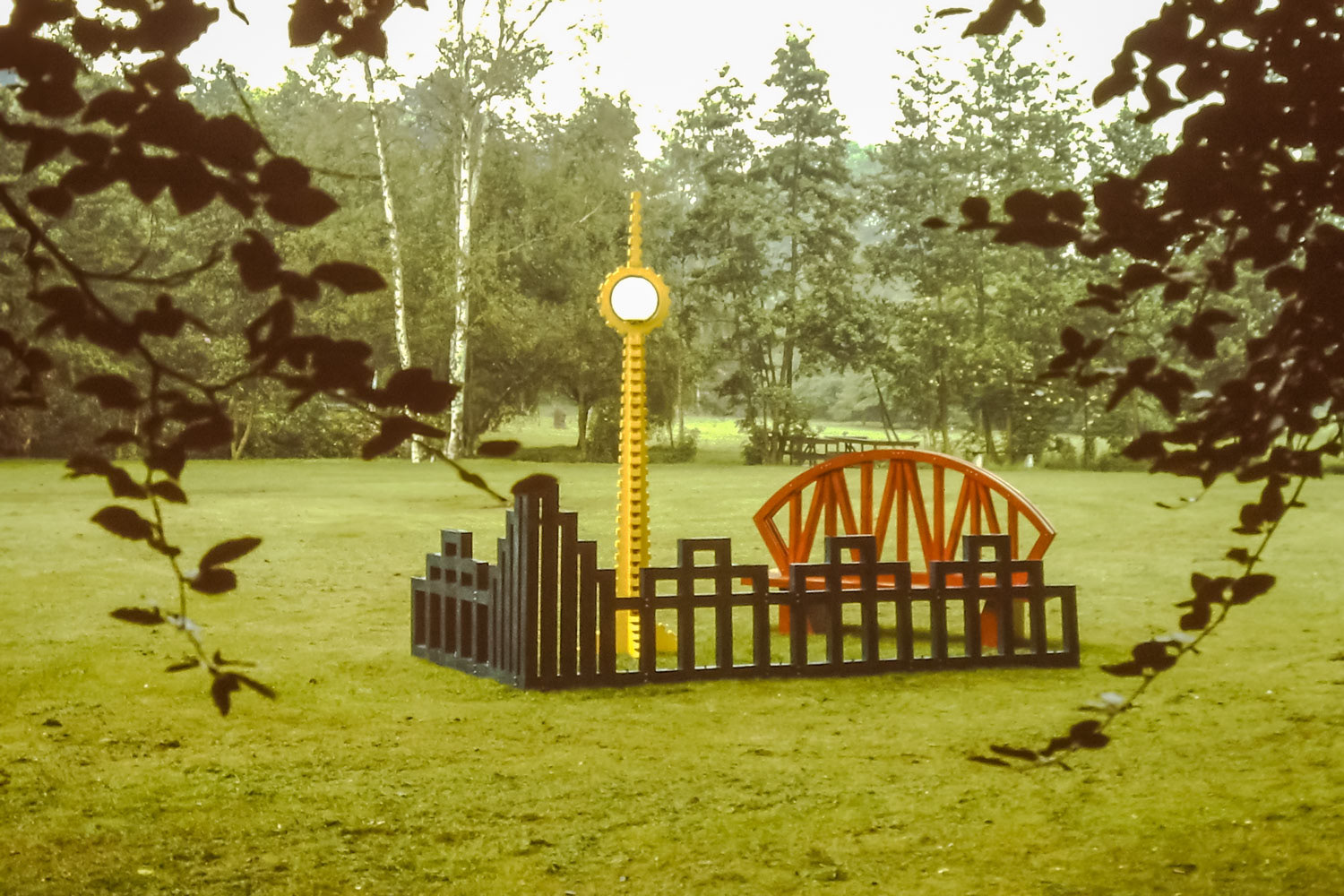
Rose Garden (1988)
In 1988, five yellow-painted sculptures "guard" a rose garden in Neuss from above – installed in the windows of a water tower. The construction from cut wooden panels allows for more pointed, expressive forms. The ghostly figures appear both protective and alien at the same time.
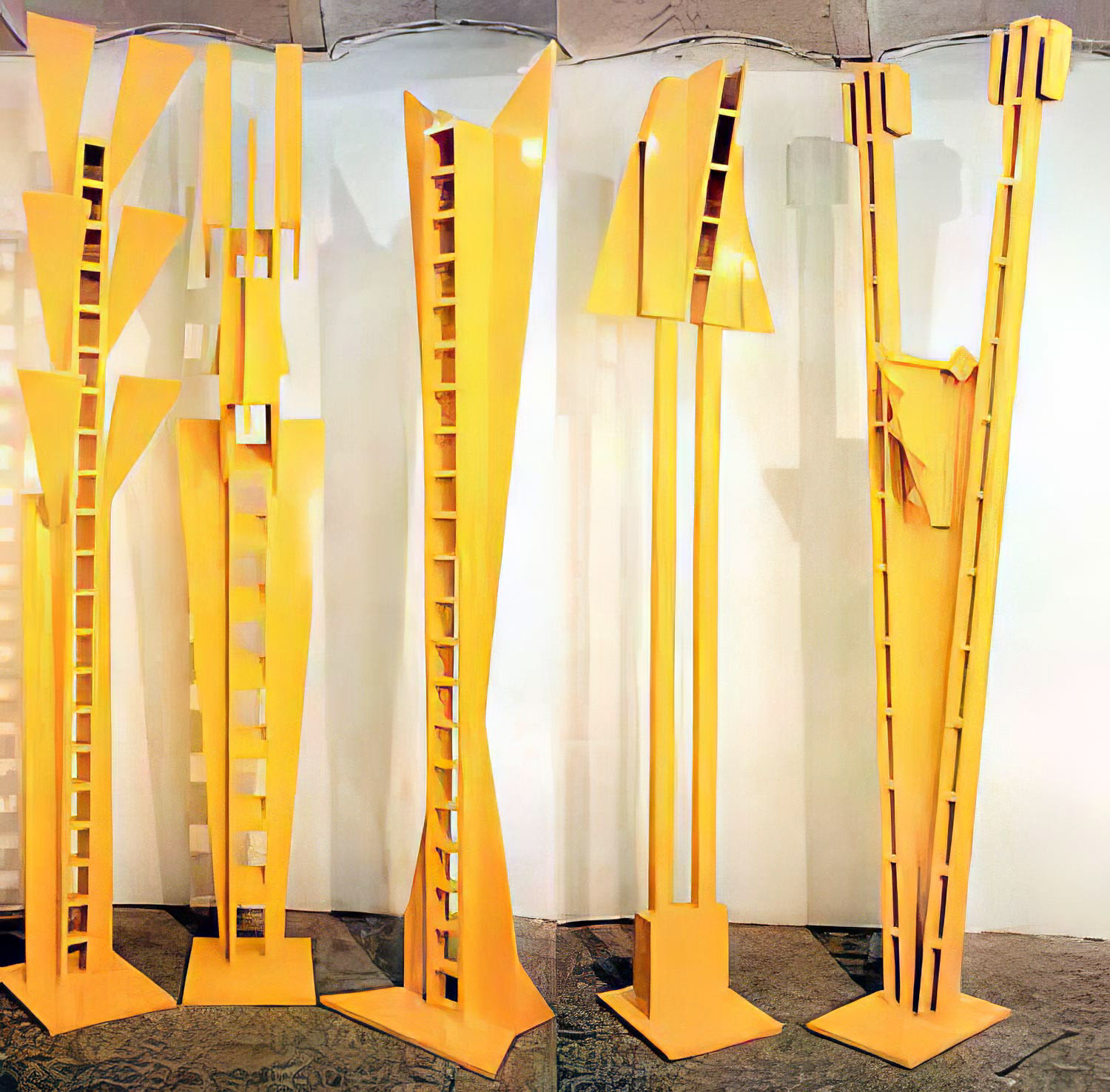
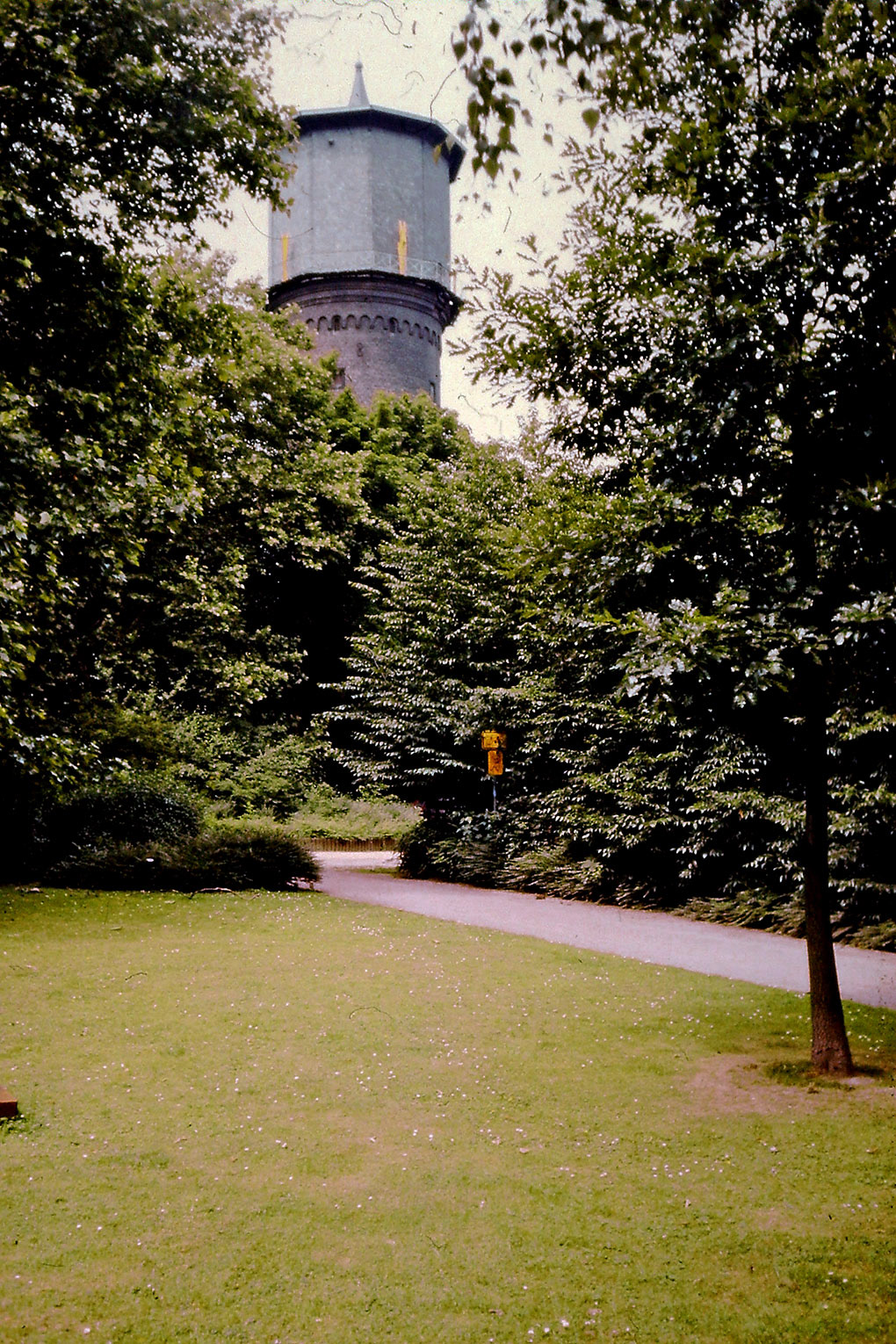
Hall of Thrones (1989)
For a further exhibition at Tucci Russo, the standing sculptures are transformed into chairs – with seats, heraldic symbols and tiled pedestals. Next to the "Hall of Thrones“ there is an eighth square with a group of small figures: senti. The sculptures are painted blue or red.
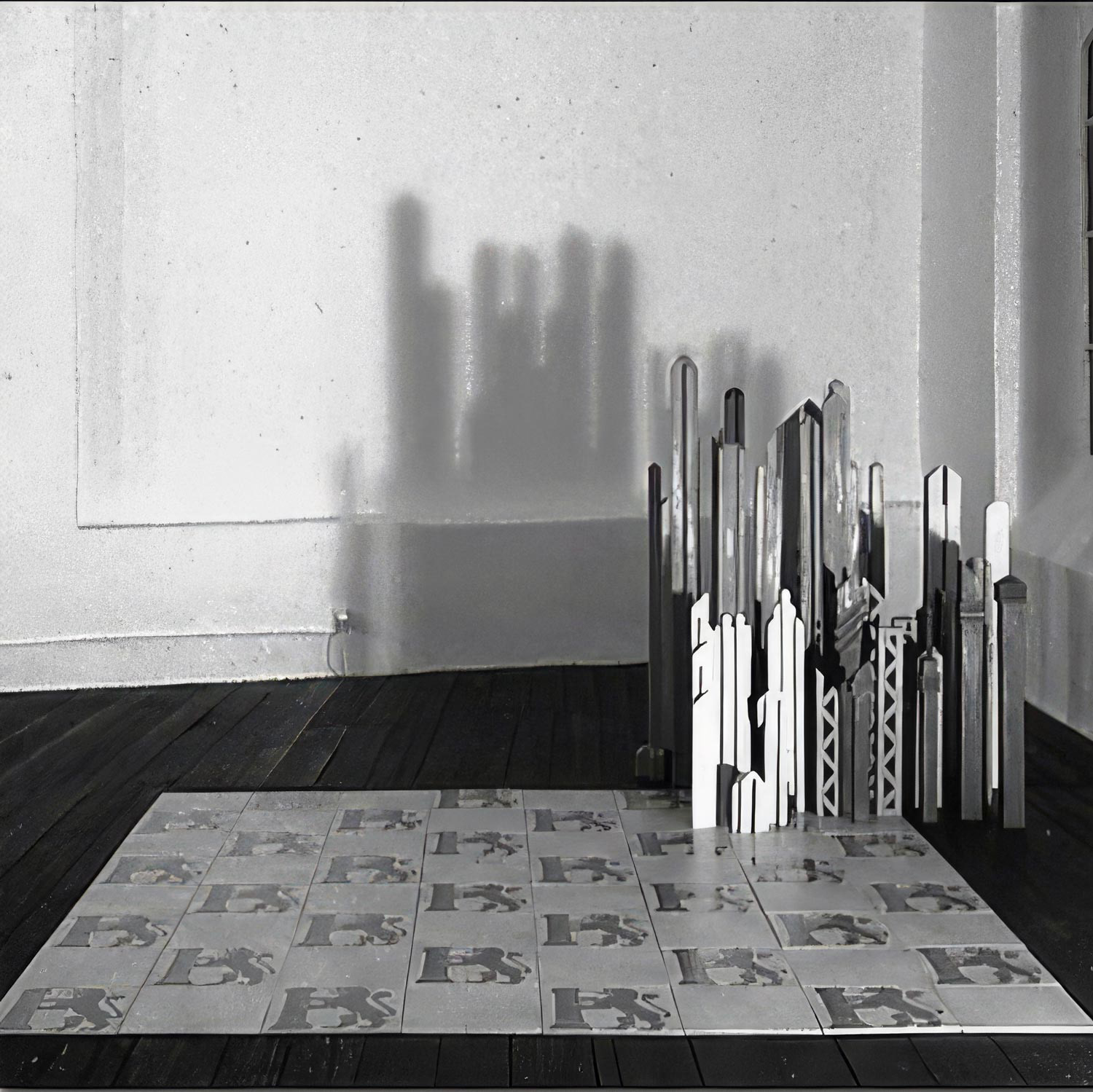
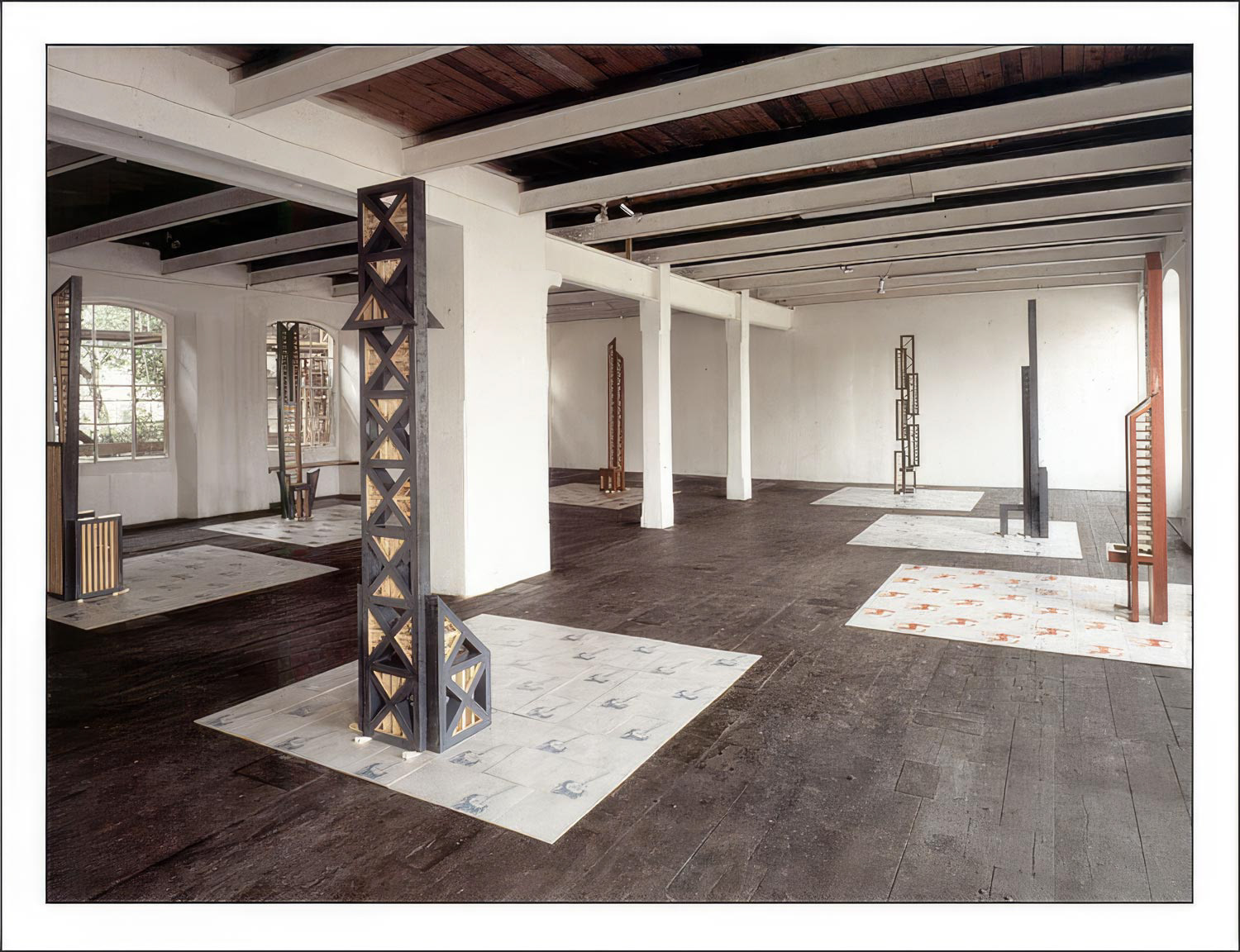
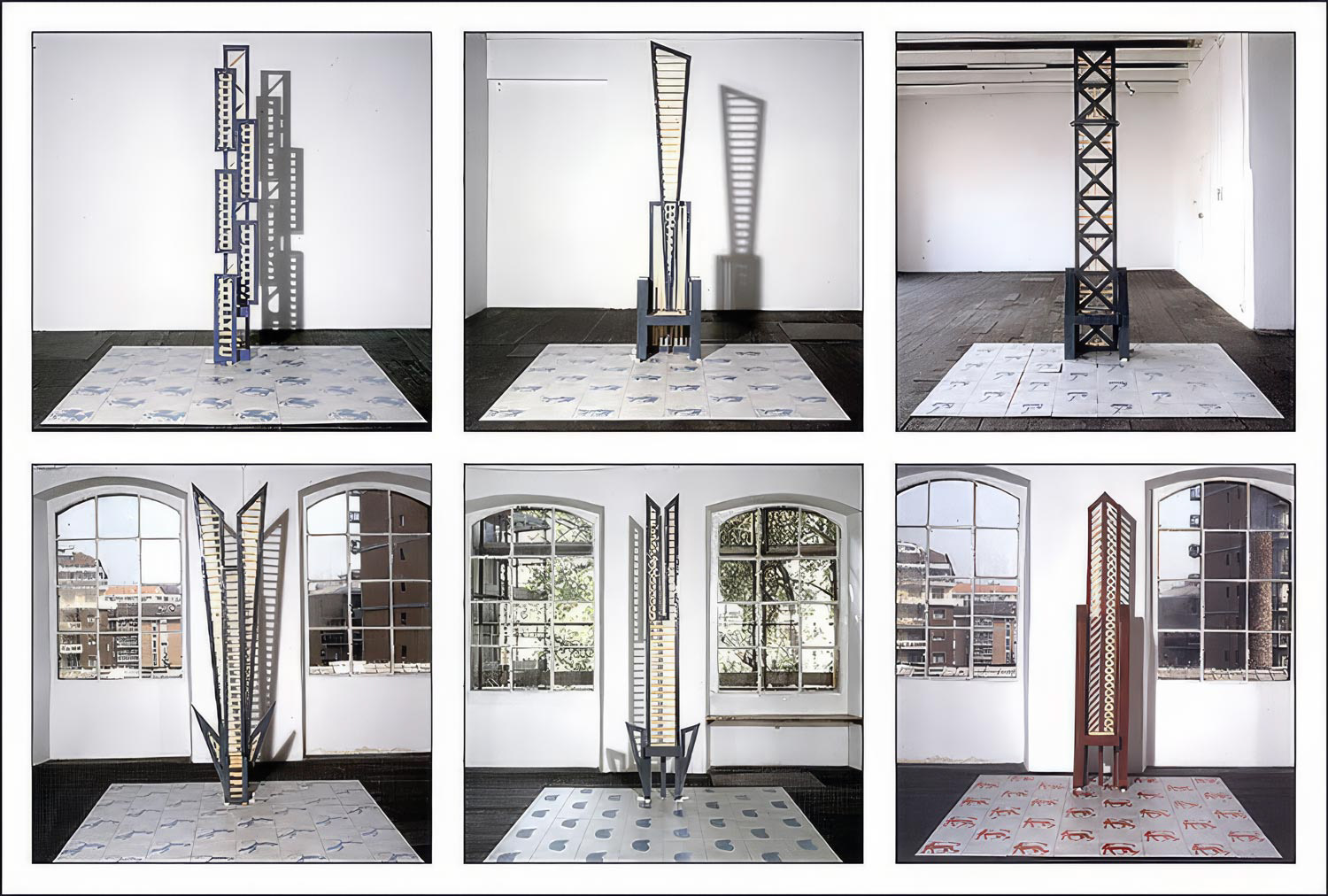
Neons (1989)
Seven light boxes with glued-in newspaper adverts, borders and painted surfaces thematise communication patterns between artists – ironically and exaggerated. The boxes are backlit in colour, the ornaments cut, collage and light merge into symbolic scenes.
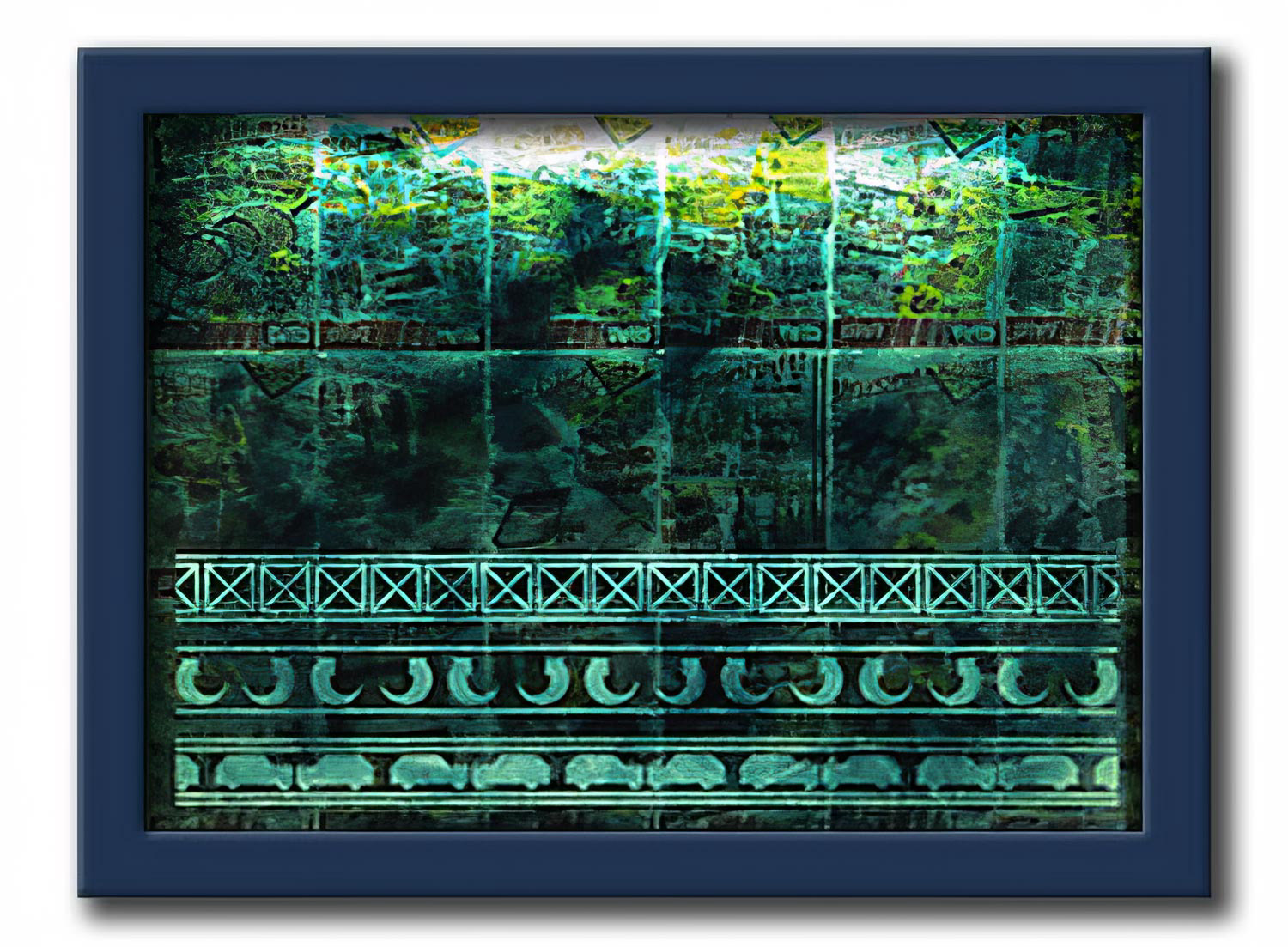
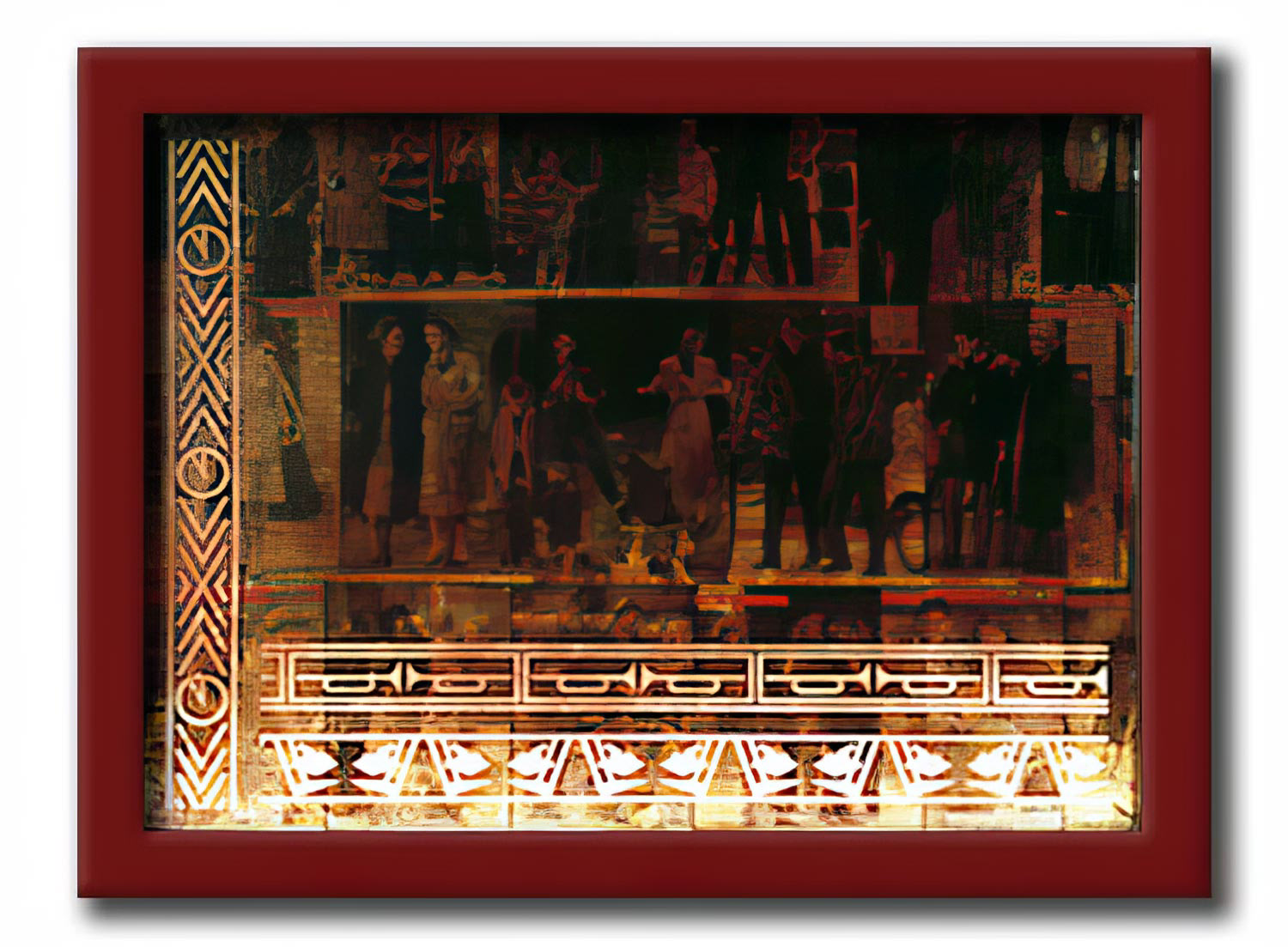
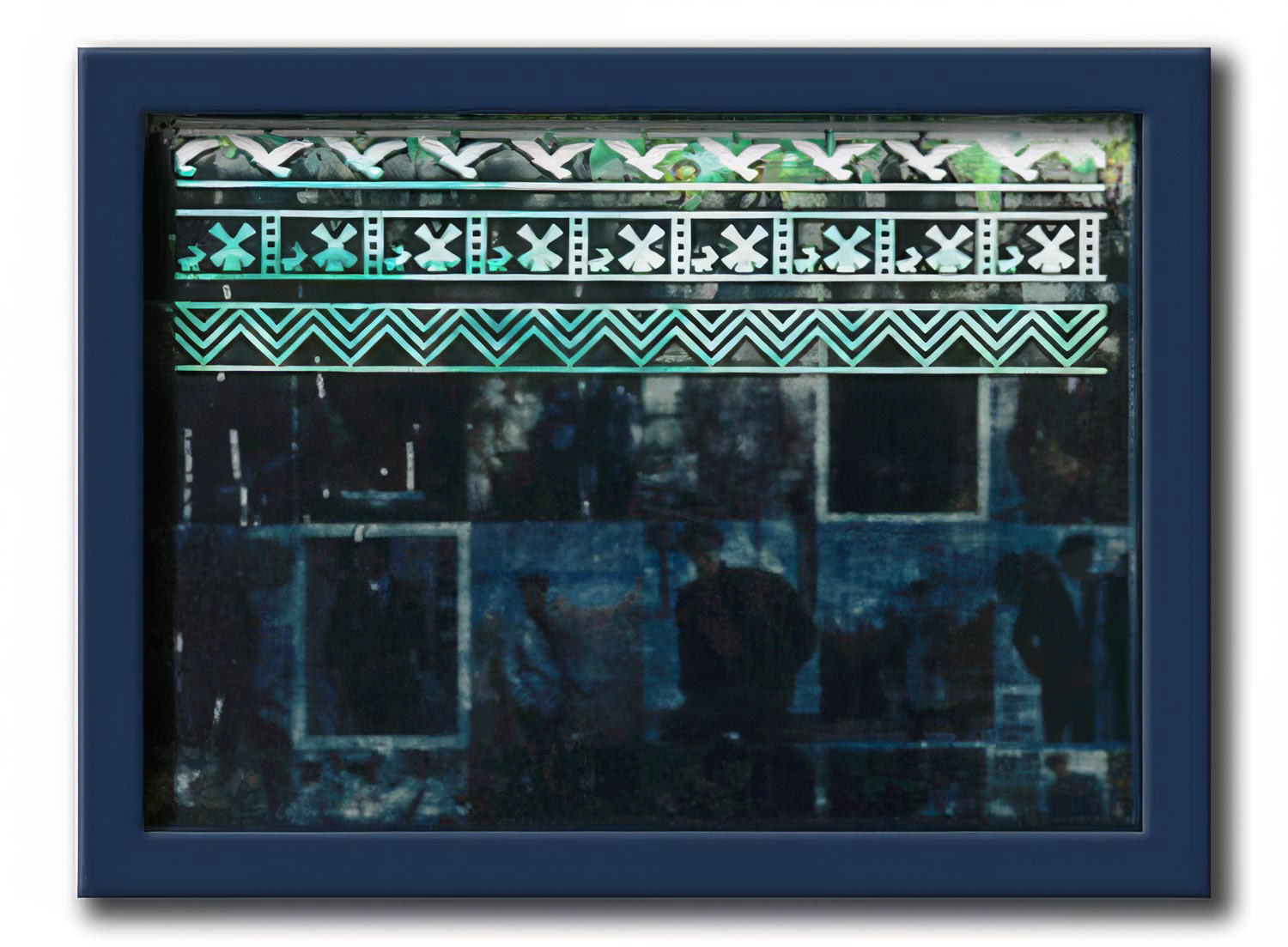
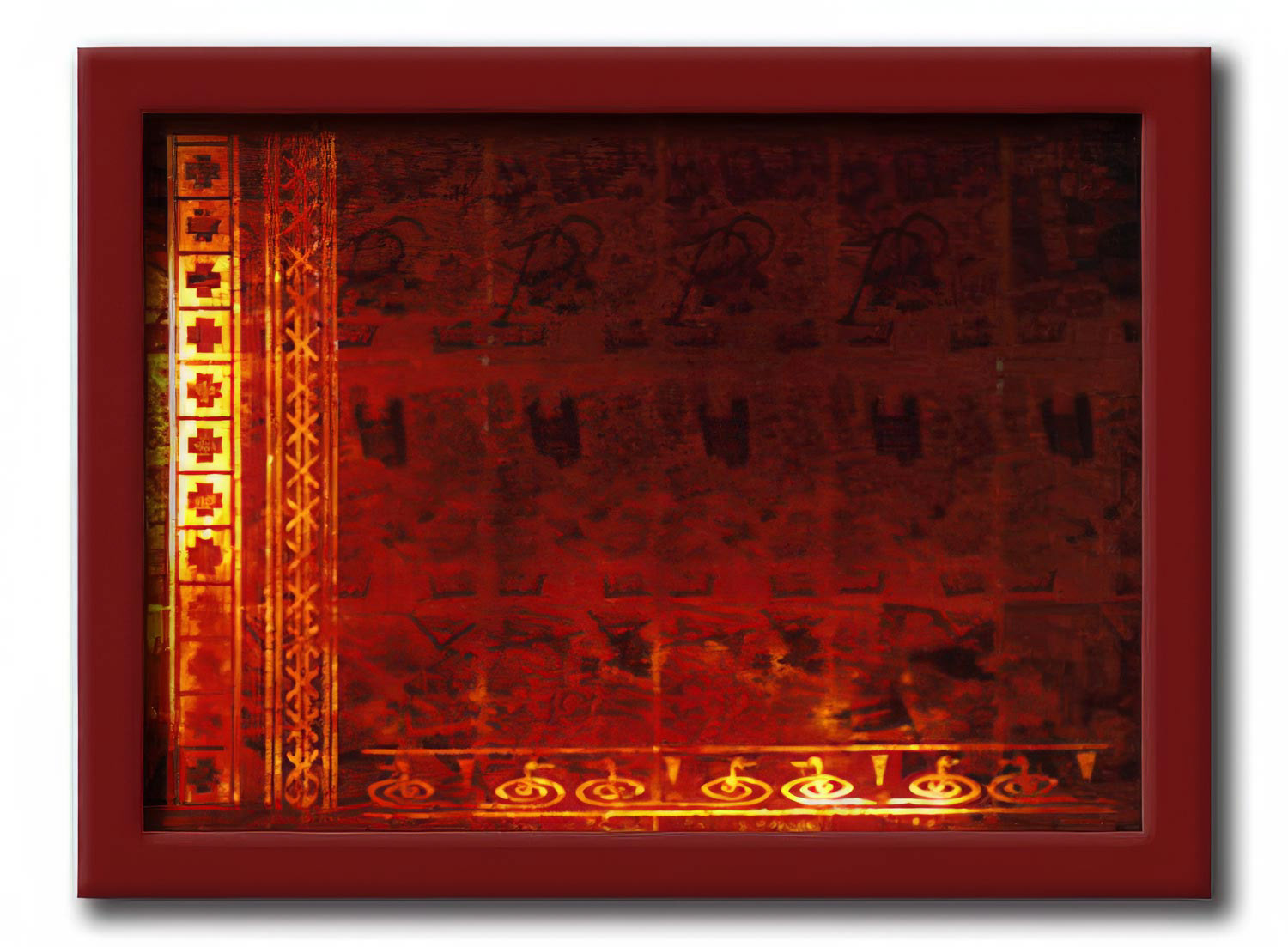
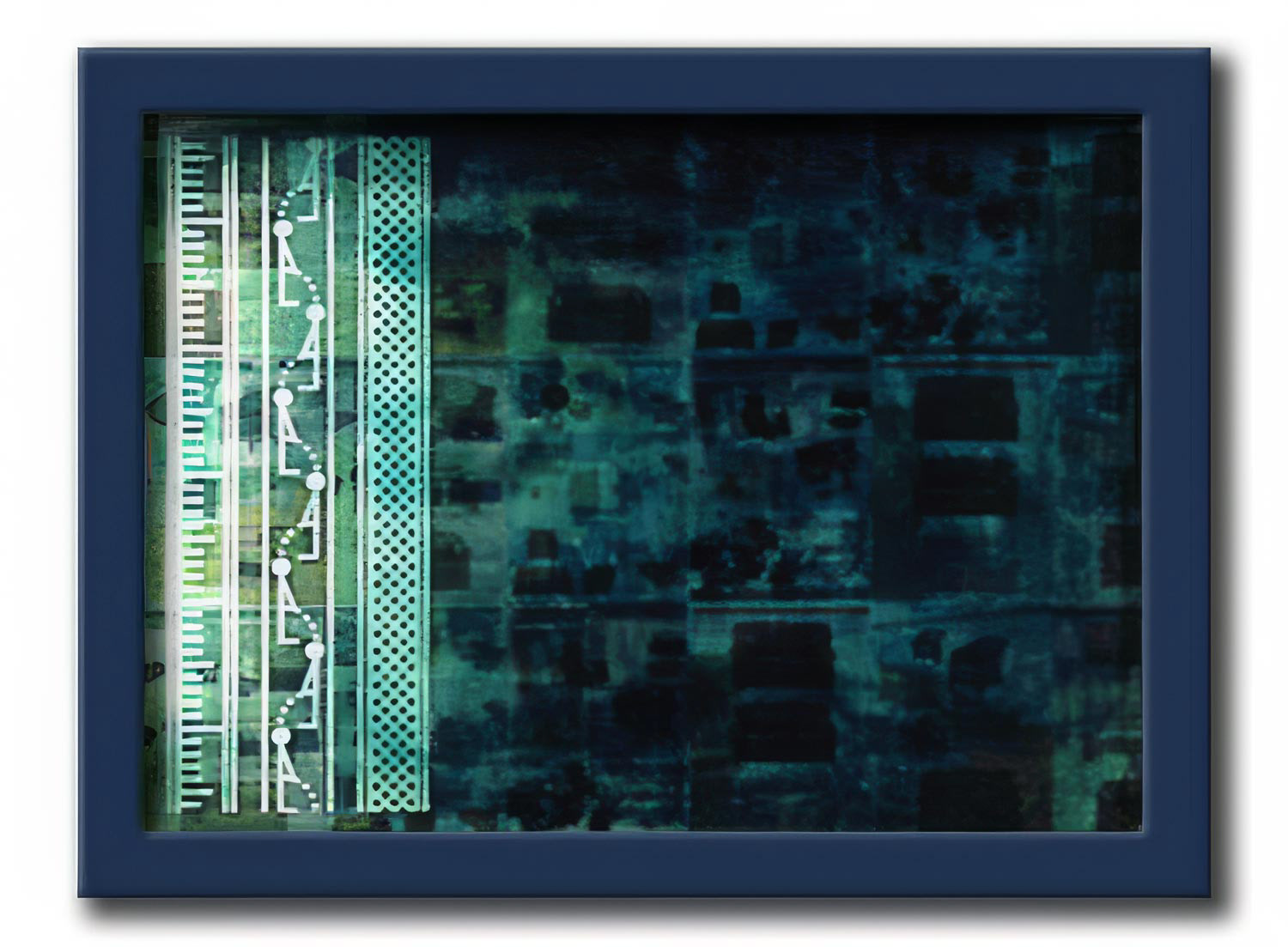
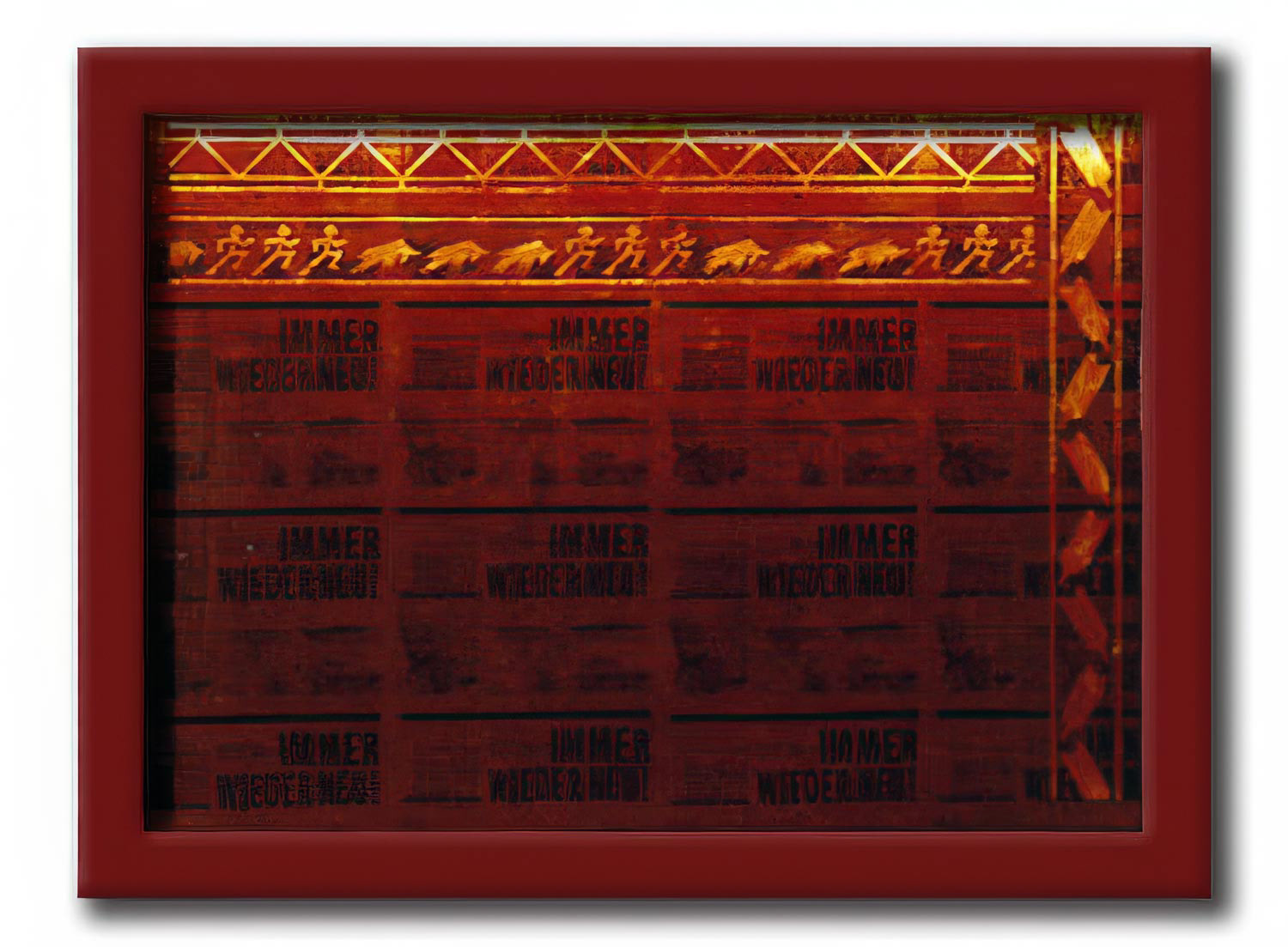
Skat (1989)
One of the Neuss sculptures is painted green and placed in the window of the Galerie Fischer in Düsseldorf. Below it is a table with benches – the former meeting point of the studio community. Seven little ghosts gather: a symbol of the heritage that is carried into the future.
Mountains / Pas de Roland (1989)
Five small ghost figures guard five mountains made of plaster and wood – inspired by the legendary Pas de Roland in the French Pyrenees. A coloured relief forms the background.